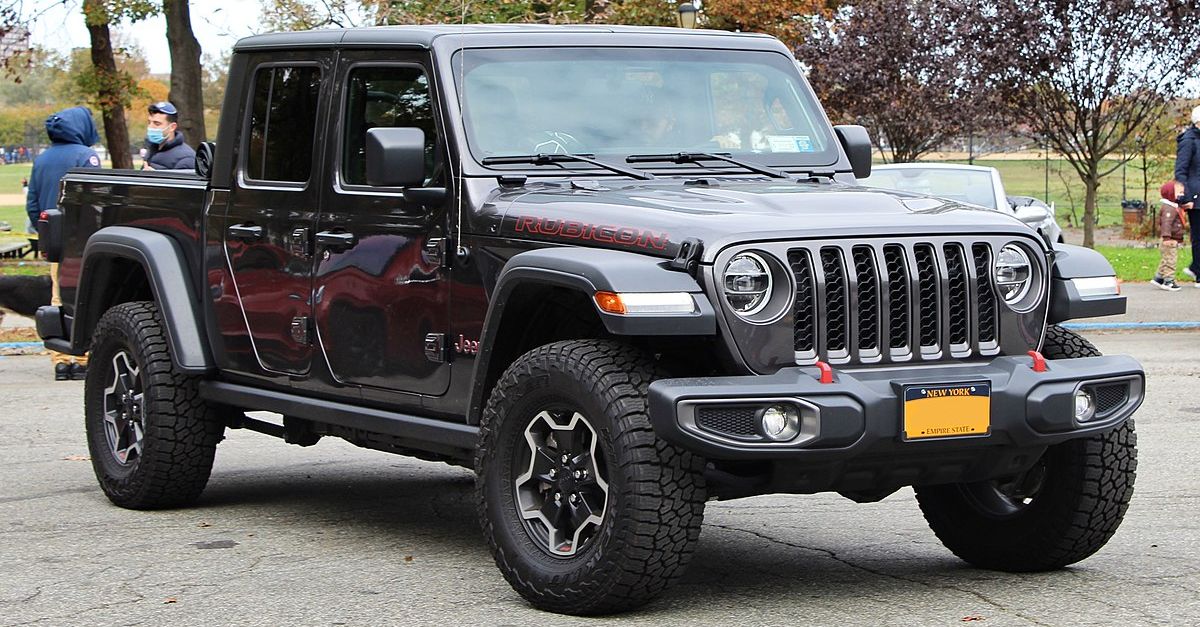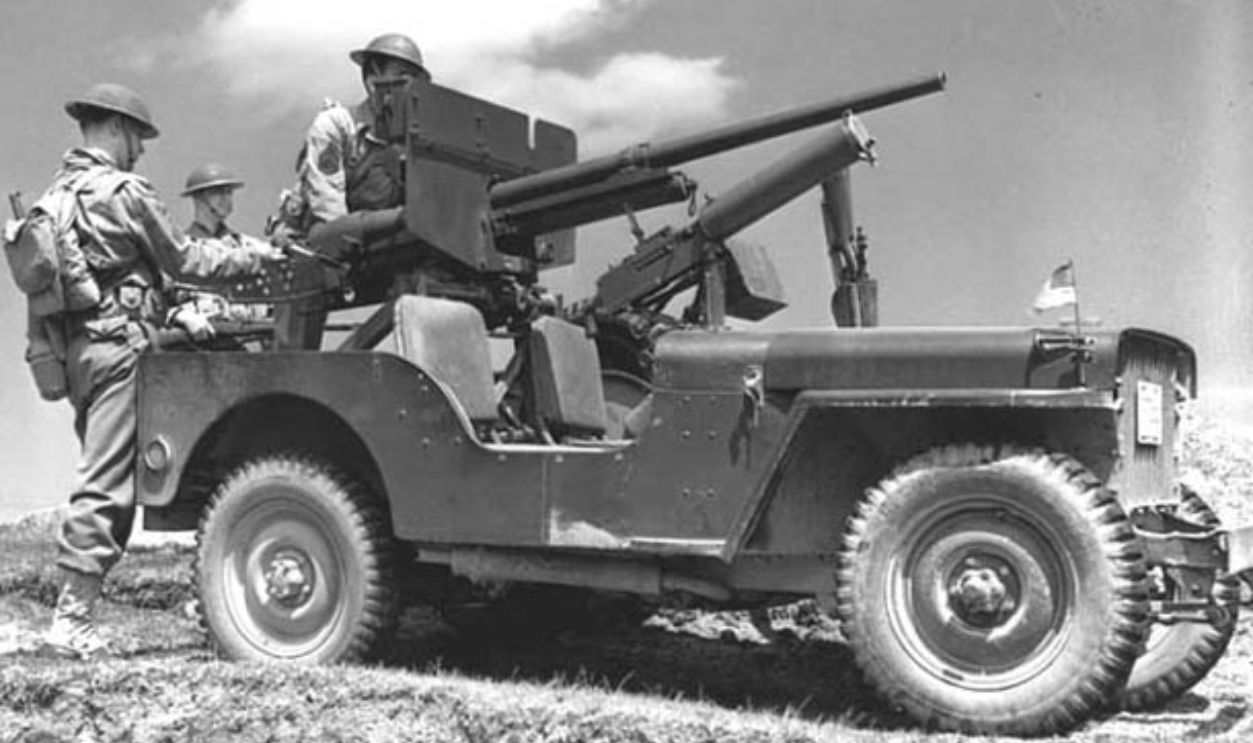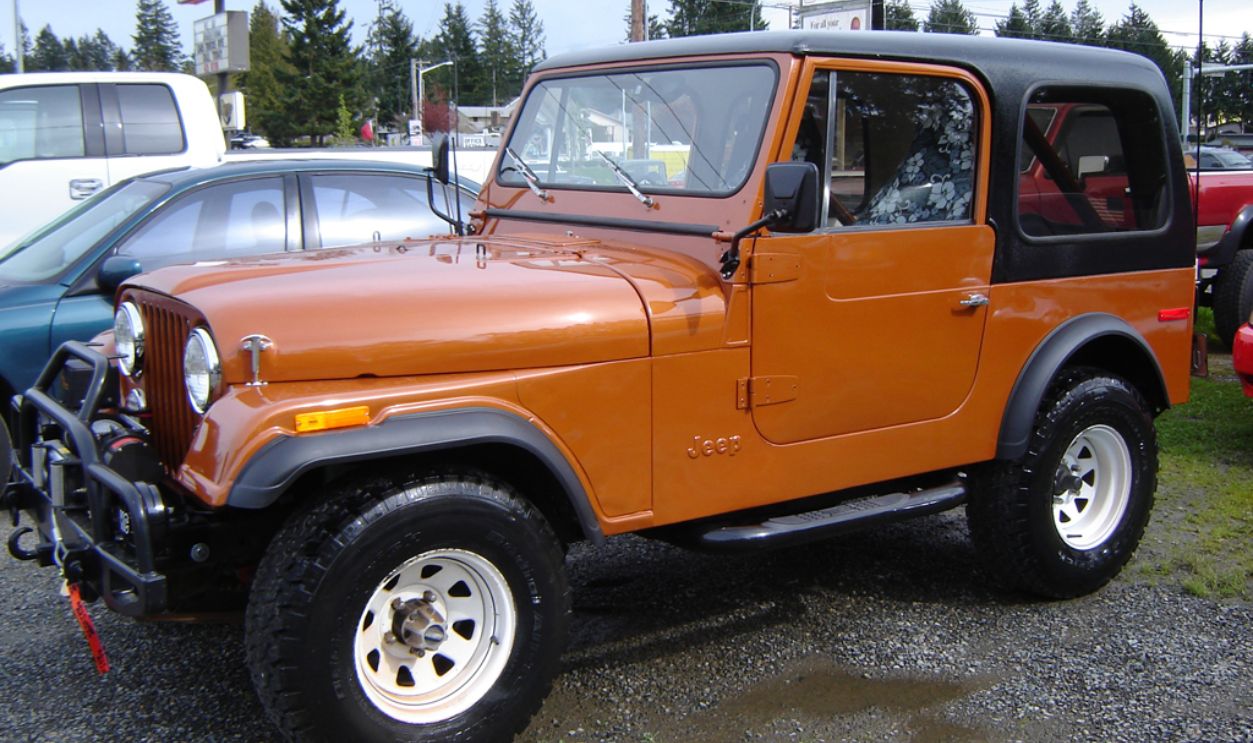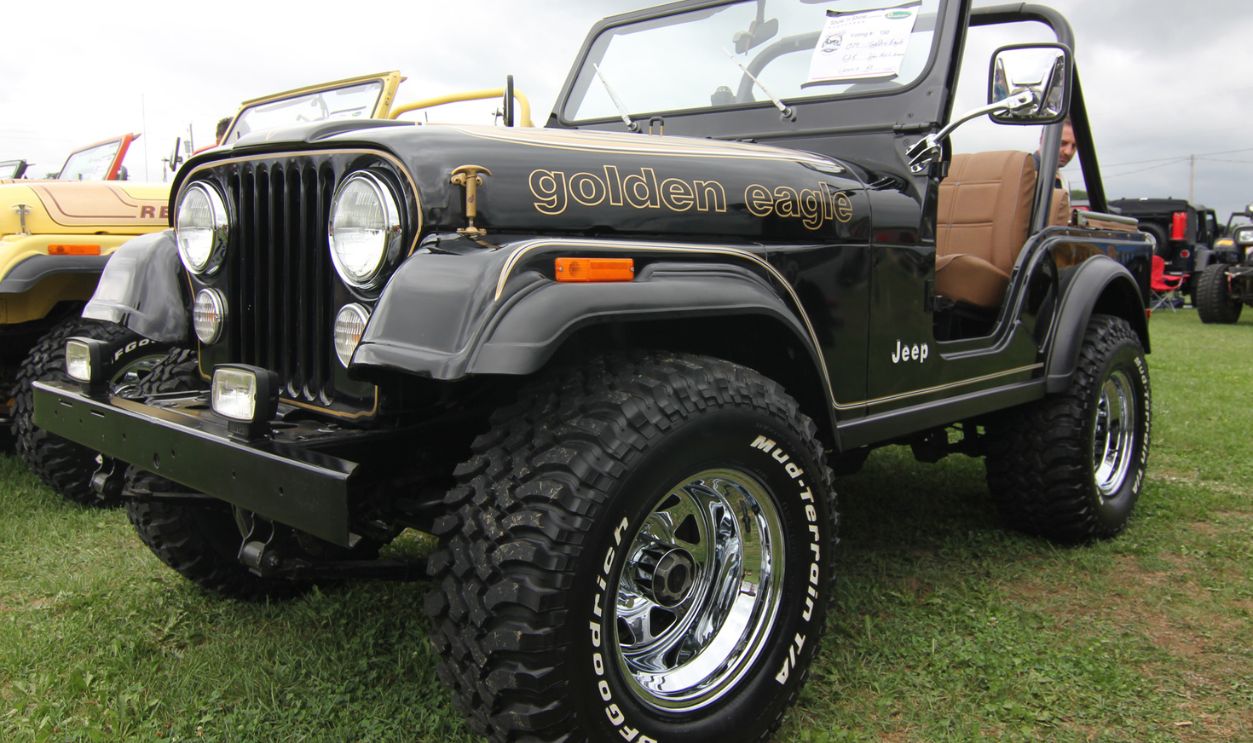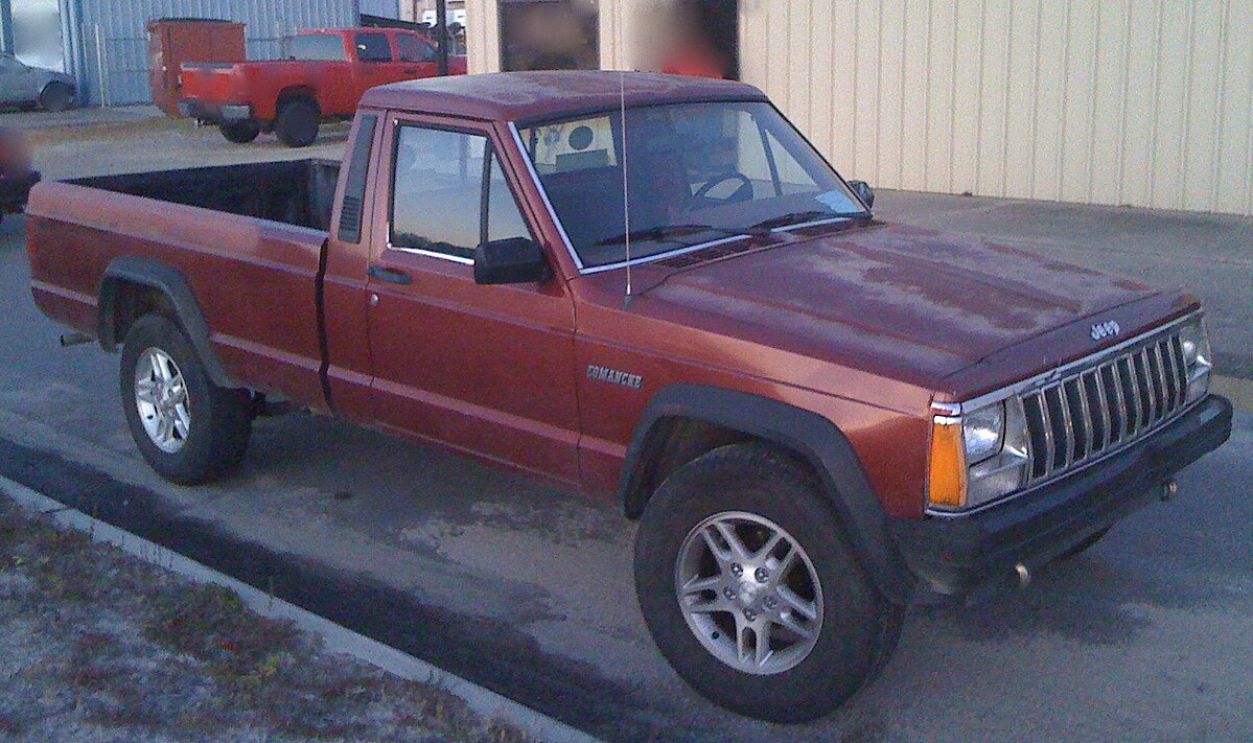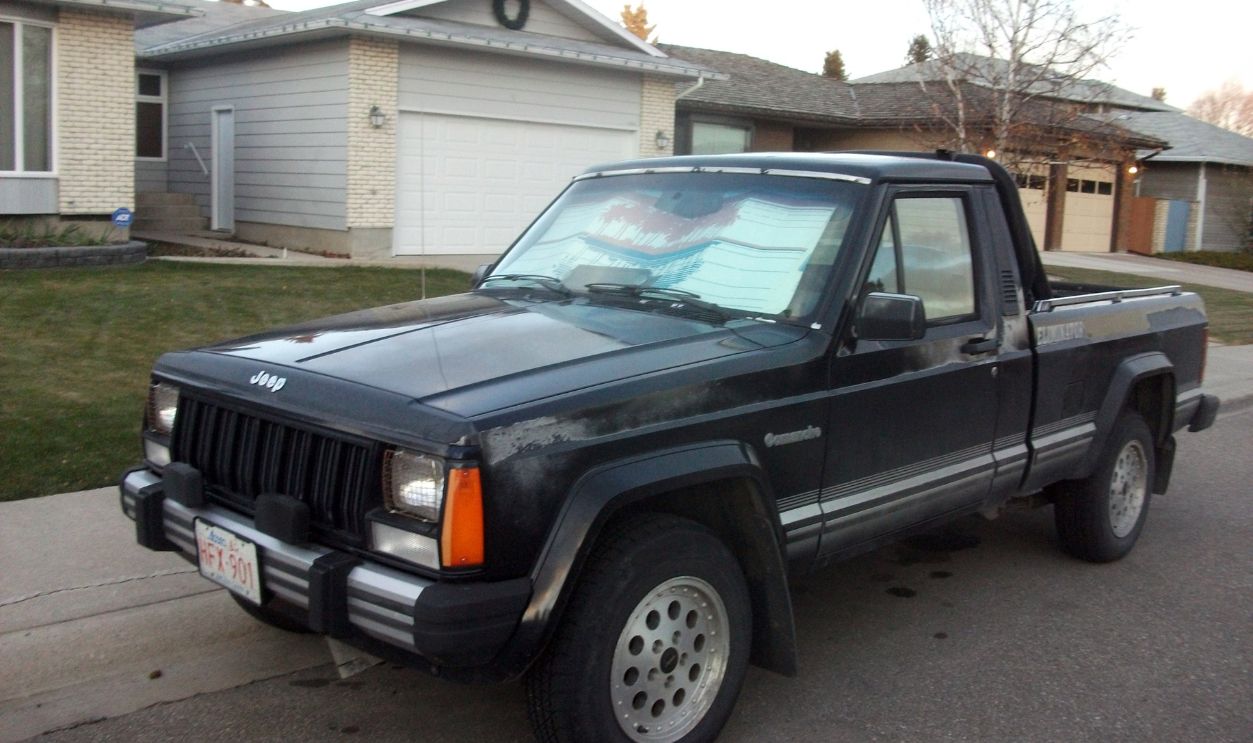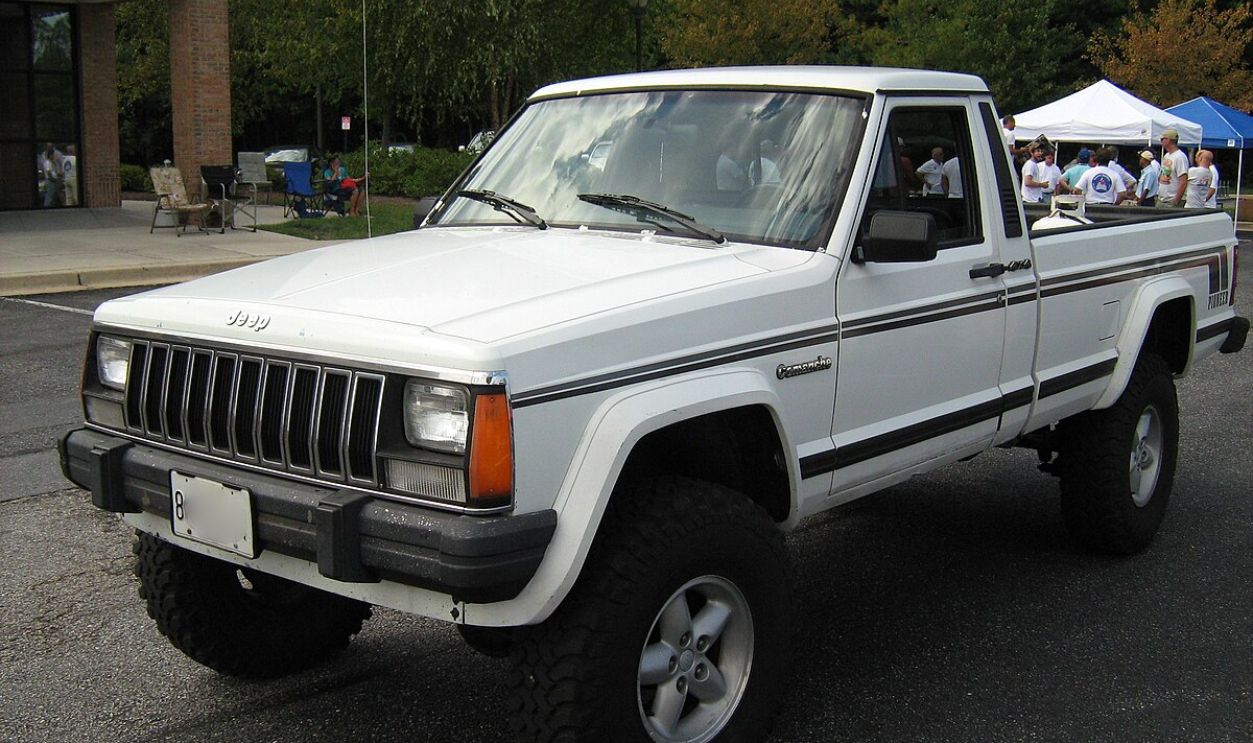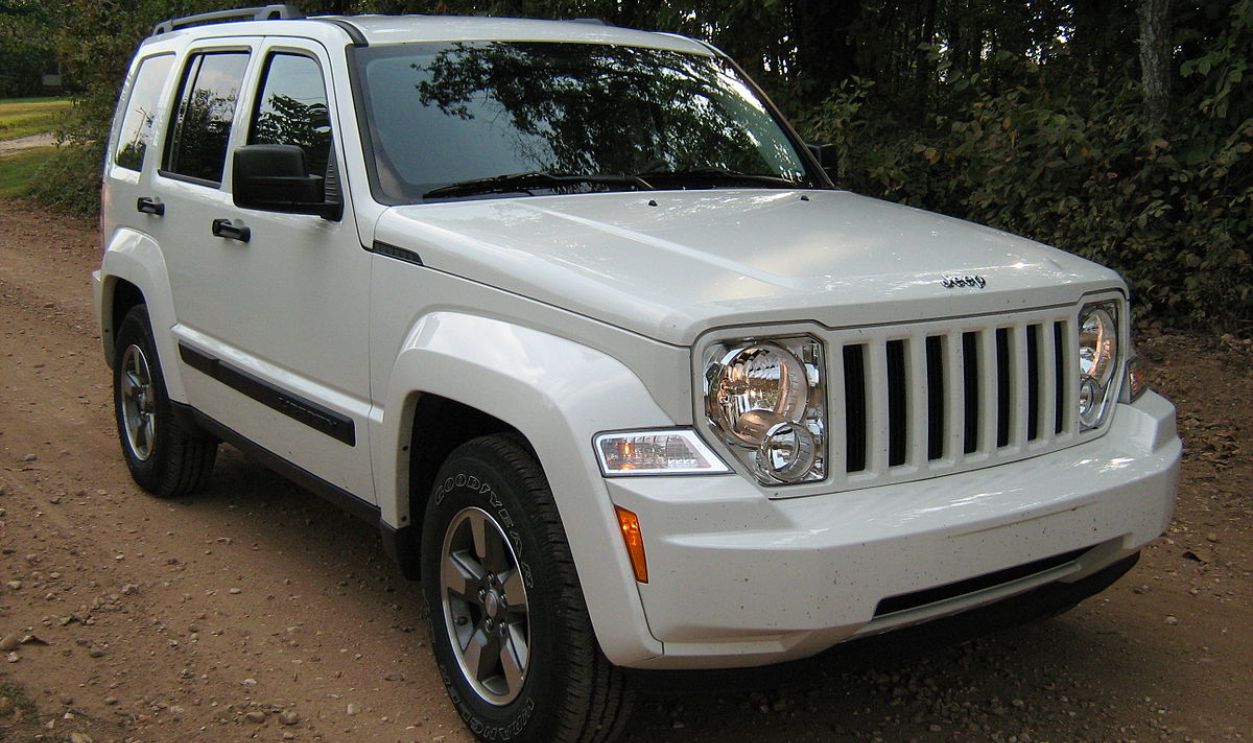Definition Of Rugged
The first Jeep Trucks were released during WWII as Allied forces sought rugged and versatile vehicles. What became of them after the war, and how did they become this relevant today?
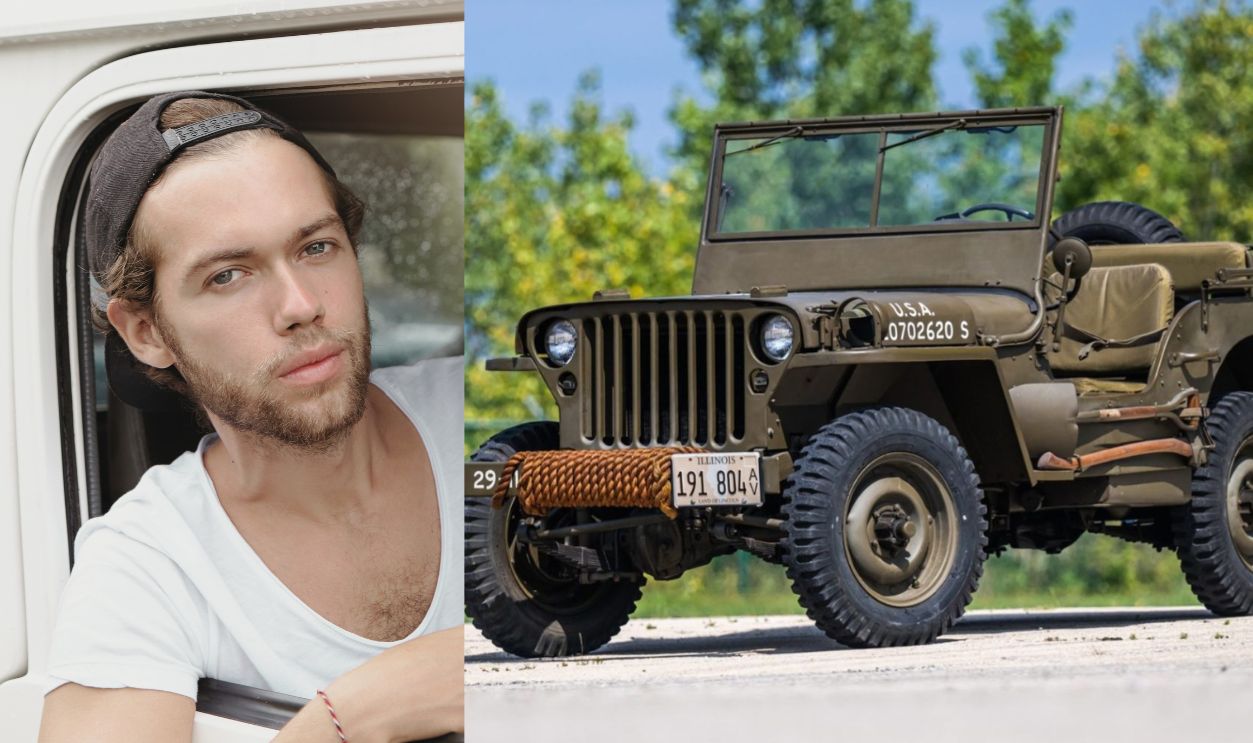
Significance In Automotive History
Jeep was the first vehicle to combine the capabilities of trucks and off-road cars. This feature endears it to customers, including farmers, construction workers, and adventurers, who need a vehicle that can perform in any environment. It all started in the year 1941.
Willys MB (1941–1945)
At the onset of WWII, Allied forces needed vehicles rugged enough to withstand rough terrain but versatile enough for military operations. And the Willys MB perfectly fit the job description with its 2.2-liter Go Devil inline-four engine, delivering 60 horsepower and 105 lb-ft of torque.
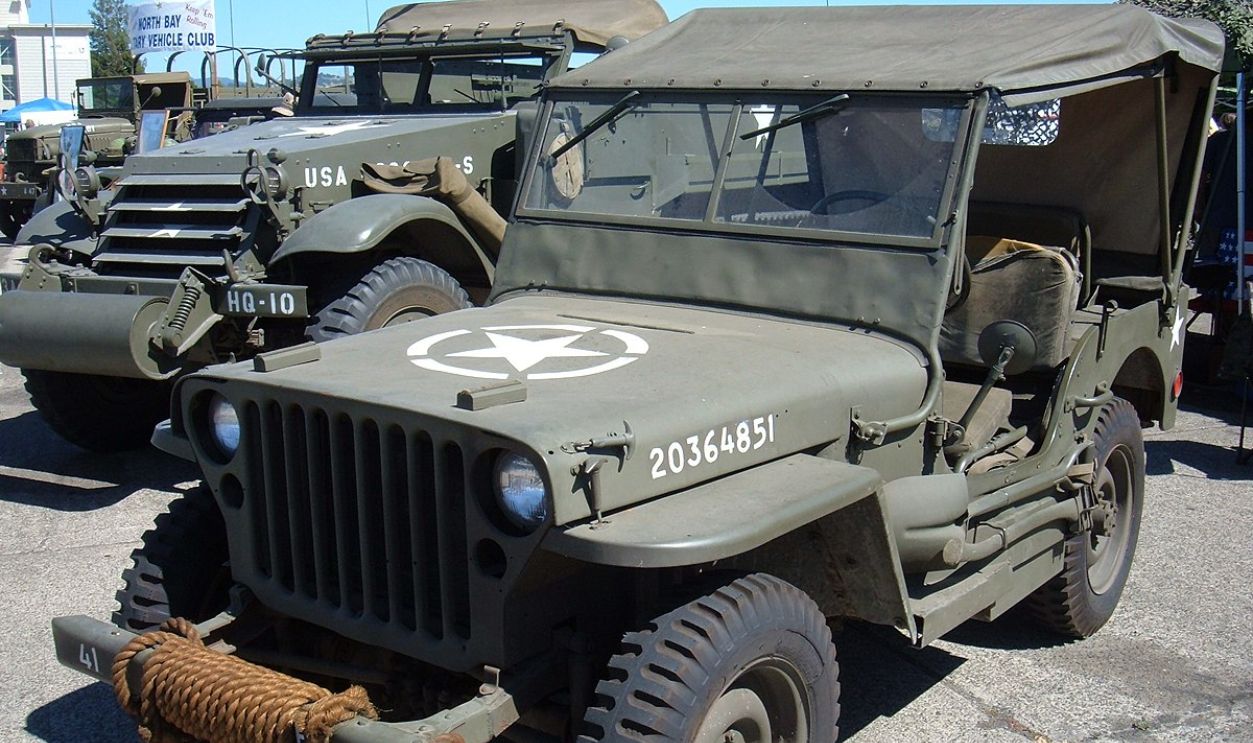 BrokenSphere, CC BY 3.0, Wikimedia Commons
BrokenSphere, CC BY 3.0, Wikimedia Commons
Jeep CJ (Civilian Jeep) Series (1944–1986)
Because the Willys MB played a vital role in the outcome of the war, the next idea was to find its civilian equivalent. Immediately, the Jeep CJ, or Civilian Jeep, was launched for that purpose. Early CJ models included the CJ-2A, CJ-3A, CJ-3B, and CJ-5.
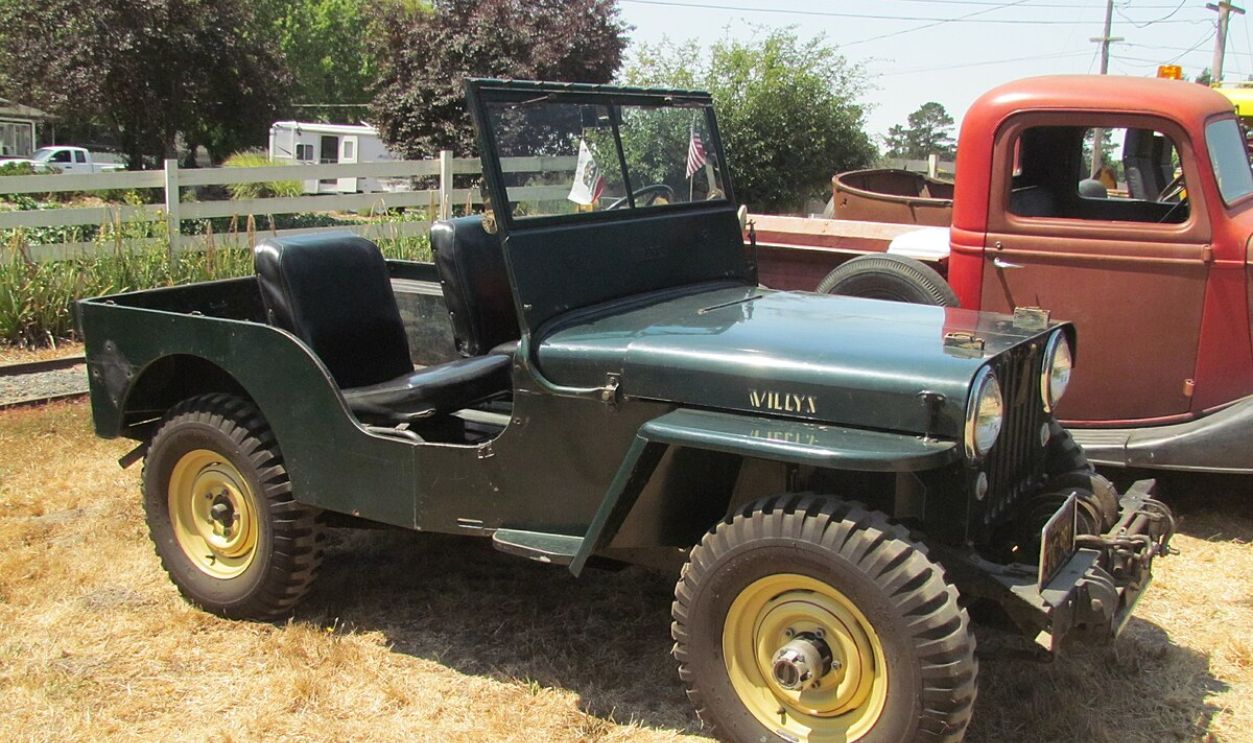 David Berry, CC BY 2.0, Wikimedia Commons
David Berry, CC BY 2.0, Wikimedia Commons
Willys Jeep 4x4 Truck (1947–1965)
After the Jeep CJ came the Willys Jeep 4x4 Truck, which featured an upgraded 134 cubic-inch Go-Devil I4 engine, producing 63 horsepower. The Truck's design included a rugged chassis and high ground clearance for off-road suitability. And guess what? It also had a part-time 4WD system.
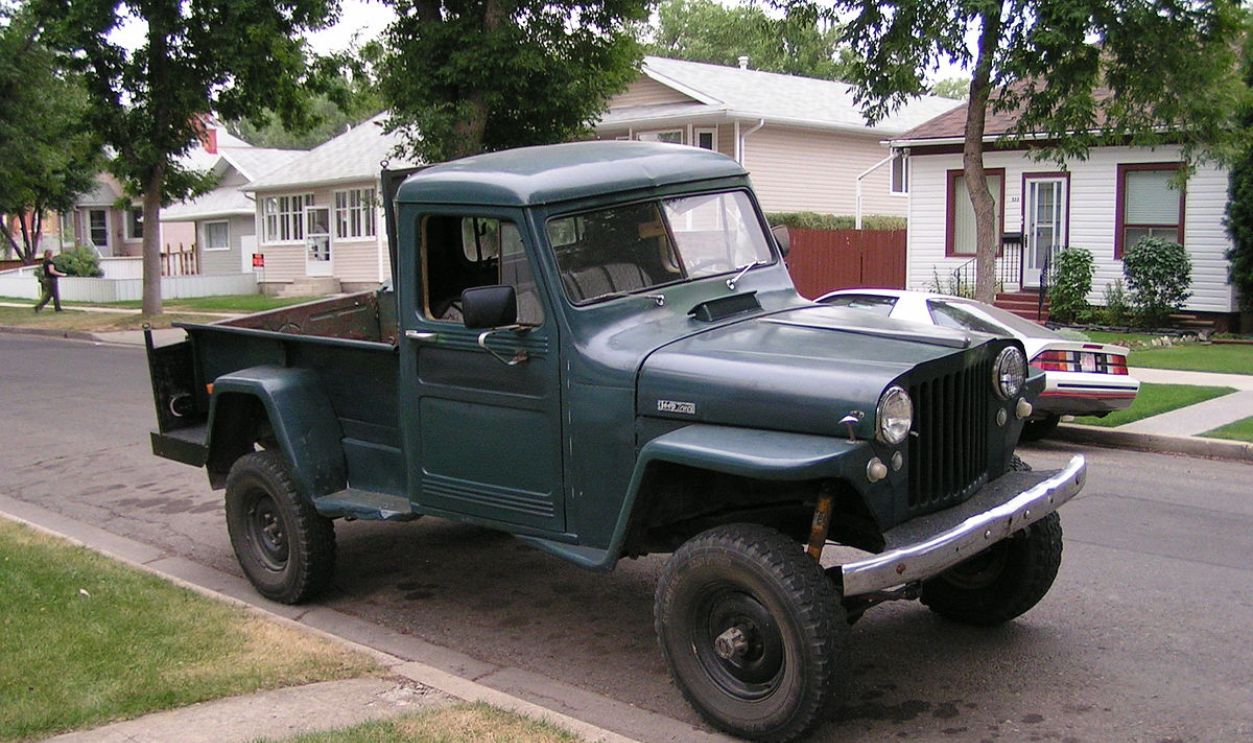 dave_7, CC BY-SA 2.0, Wikimedia Commons
dave_7, CC BY-SA 2.0, Wikimedia Commons
Willys Pickup (1947–1965)
This Jeep model was the versatile commercial version of the 4x4 Truck. It showcased various bed lengths and configurations, a sturdy build, and off-road capabilities. The Pickup's engine and styling were upgraded several times throughout its production run, perhaps to keep it in sync with technological changes.
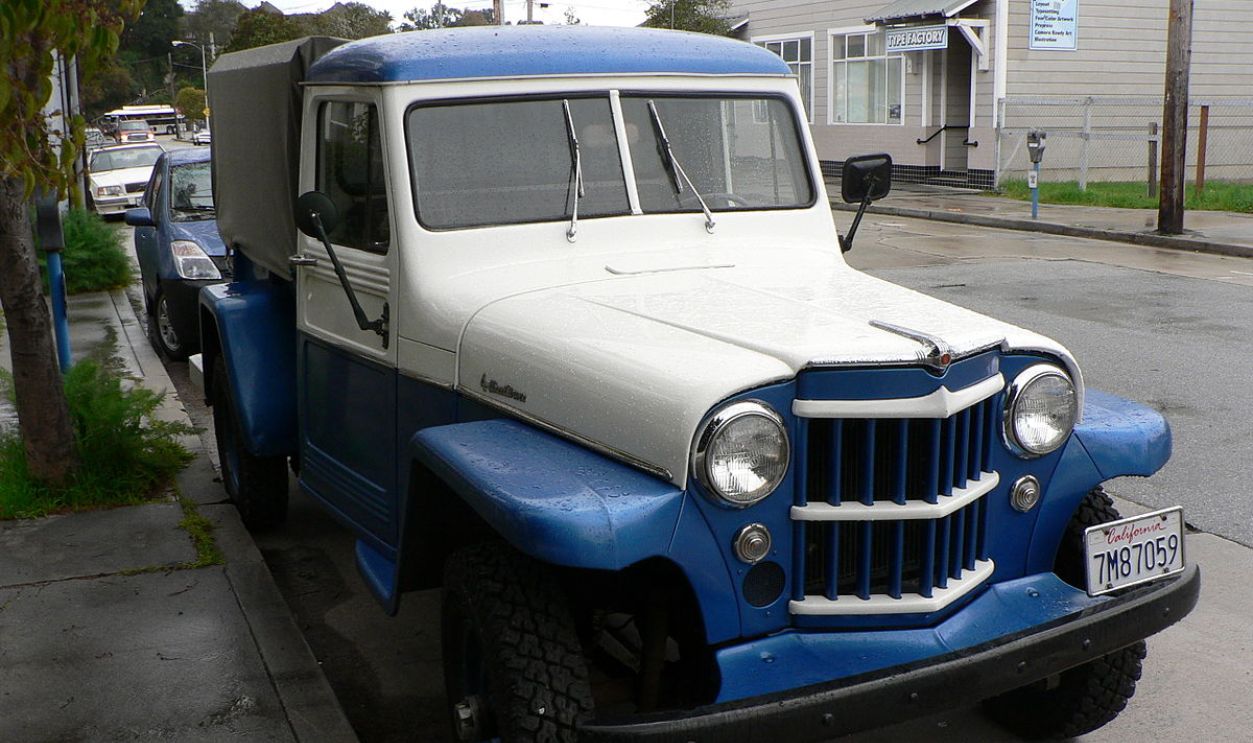 David Monniaux, CC BY-SA 3.0, Wikimedia Commons
David Monniaux, CC BY-SA 3.0, Wikimedia Commons
Willys Utility Truck (1947–1965)
Also part of Jeep's early lineup, the Willys Utility Truck focused on practical utility, just like the other models. Introduced in 1947, it was designed for commercial use. It had a 2.2-liter inline-four engine and an open cargo bed, features farmers and small businesses appreciate.
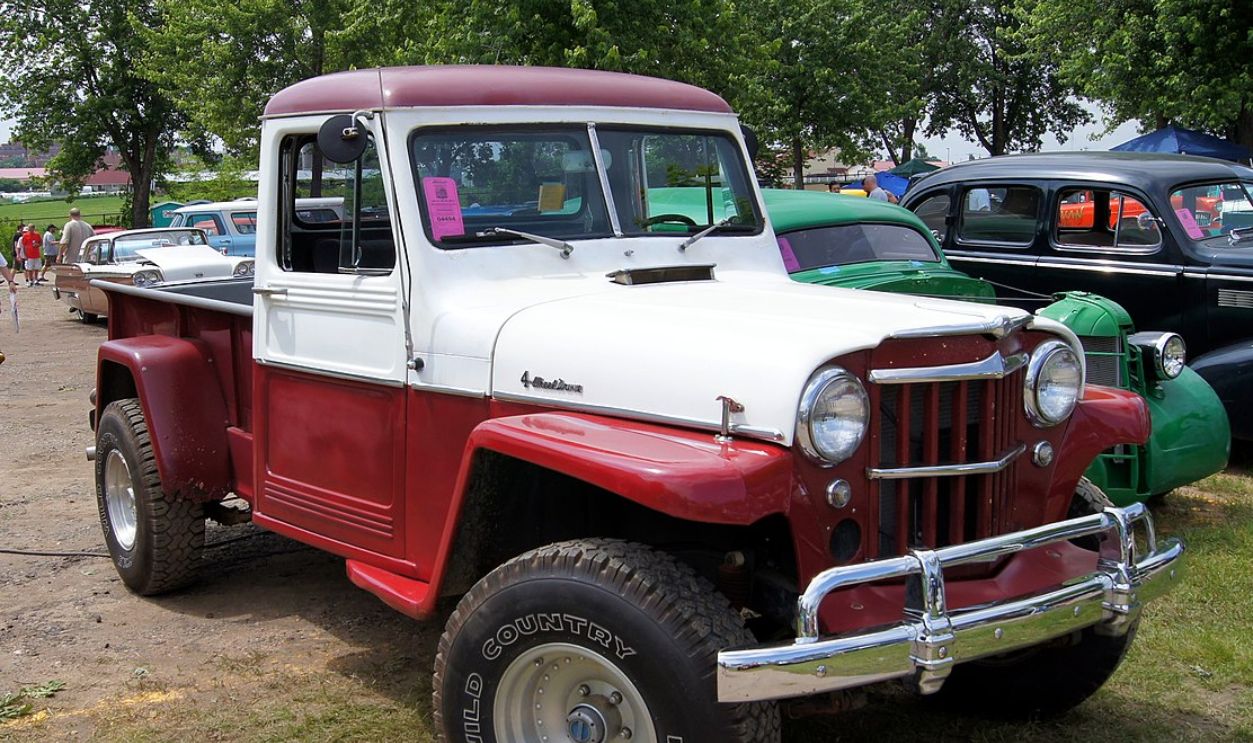 Greg Gjerdingen, CC BY 2.0, Wikimedia Commons
Greg Gjerdingen, CC BY 2.0, Wikimedia Commons
Kaiser's Acquisition of Willys-Overland (1953–1970)
In 1953, Kaiser Industries acquired Willys-Overland, giving rise to the Kaiser Jeep Era. Kaiser immediately set out to work, introducing sweeping innovations and technological advancements. These set the stage for the next-generation monster trucks, like the Gladiator and FC series.
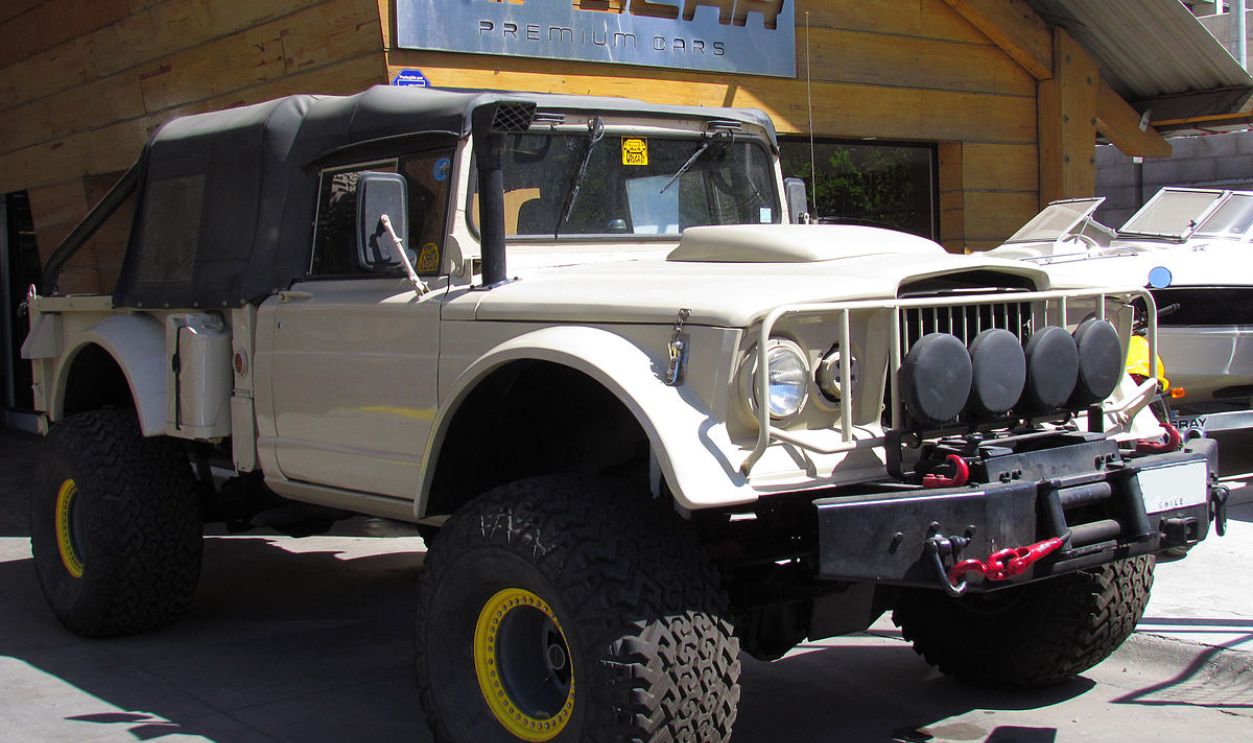 order_242, CC BY-SA 2.0, Wikimedia Commons
order_242, CC BY-SA 2.0, Wikimedia Commons
Jeep FC (1956–1965)
Kaiser introduced the Forward Control (FC) series three years after acquiring the Willys. It served as a civilian and military vehicle, featuring a unique cab-over-engine design that optimizes cargo space despite its compact size. Successful FC models include the FC-150 and FC-170, which differed mainly in wheelbase length.
 JOHN LLOYD, CC BY 2.0, Wikimedia Commons
JOHN LLOYD, CC BY 2.0, Wikimedia Commons
Jeep FC-150 (1956–1965)
The FC series also included the FC-150, introduced in 1956. This Jeep was designed for maximum utility, although it appeared way too small for this function. Built on a CJ-5 chassis, it had a 78-inch wheelbase and was powered by an F-head Hurricane four-cylinder engine.
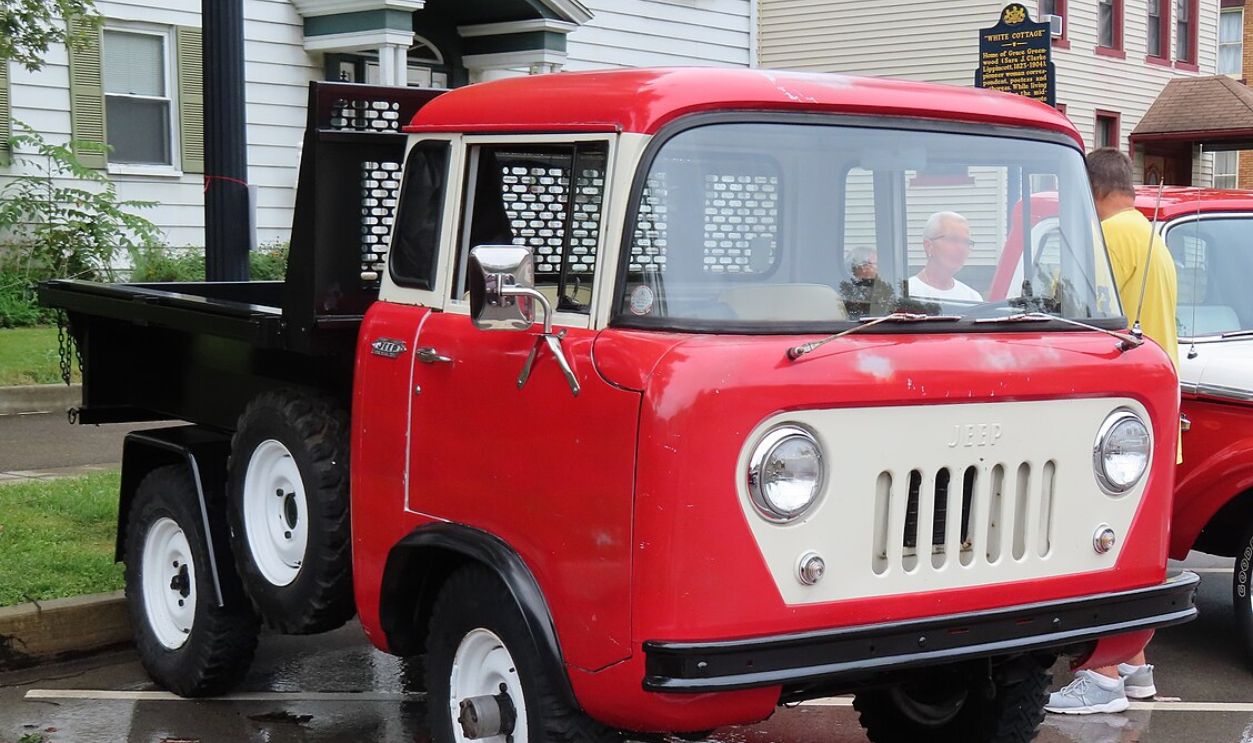 MercurySable99, CC BY-SA 4.0 , Wikimedia Commons
MercurySable99, CC BY-SA 4.0 , Wikimedia Commons
Jeep FC-170 (1957–1965)
One year after the launch of the FC series, Kaiser released the FC-170. Featuring a 103.5-inch wheelbase, the Jeep was powered by a 3.7-liter Super Hurricane inline-six or a 2.2-liter F-head Hurricane four-cylinder engine. Its Gross Vehicle Weight Rating was 8,000 pounds!
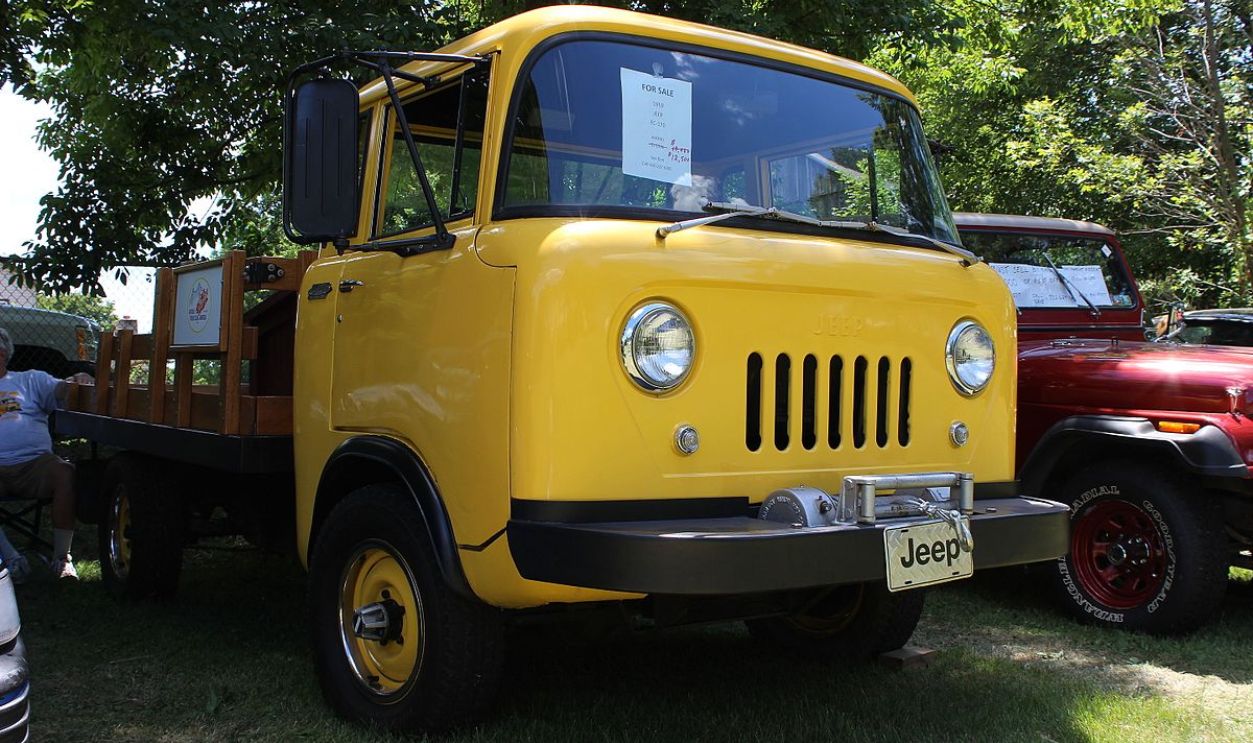 ilikewaffles11, CC BY 2.0, Wikimedia Commons
ilikewaffles11, CC BY 2.0, Wikimedia Commons
Jeep Gladiator (1962–1988)
Apparently, the FC series wasn't performing very well. So, to make up for the loss, Kaiser launched the Jeep Gladiator series in 1962. Gladiator models featured independent front suspension and the Tornado engine for improved ride quality and performance. They were also available in short and long-wheelbase configurations.
 CZmarlin, CC BY-SA 4.0, Wikimedia Commons
CZmarlin, CC BY-SA 4.0, Wikimedia Commons
Jeep Gladiator J200 (1962–1965)
As the first iteration of the Gladiator nameplate, the Jeep Gladiator J200 was built on the Jeep Wagoneer platform. This initiative helped the brand save production costs while giving its products a facelift. Furthermore, the J200 featured a rugged body-on-frame construction and a 3.8-liter inline-six engine.
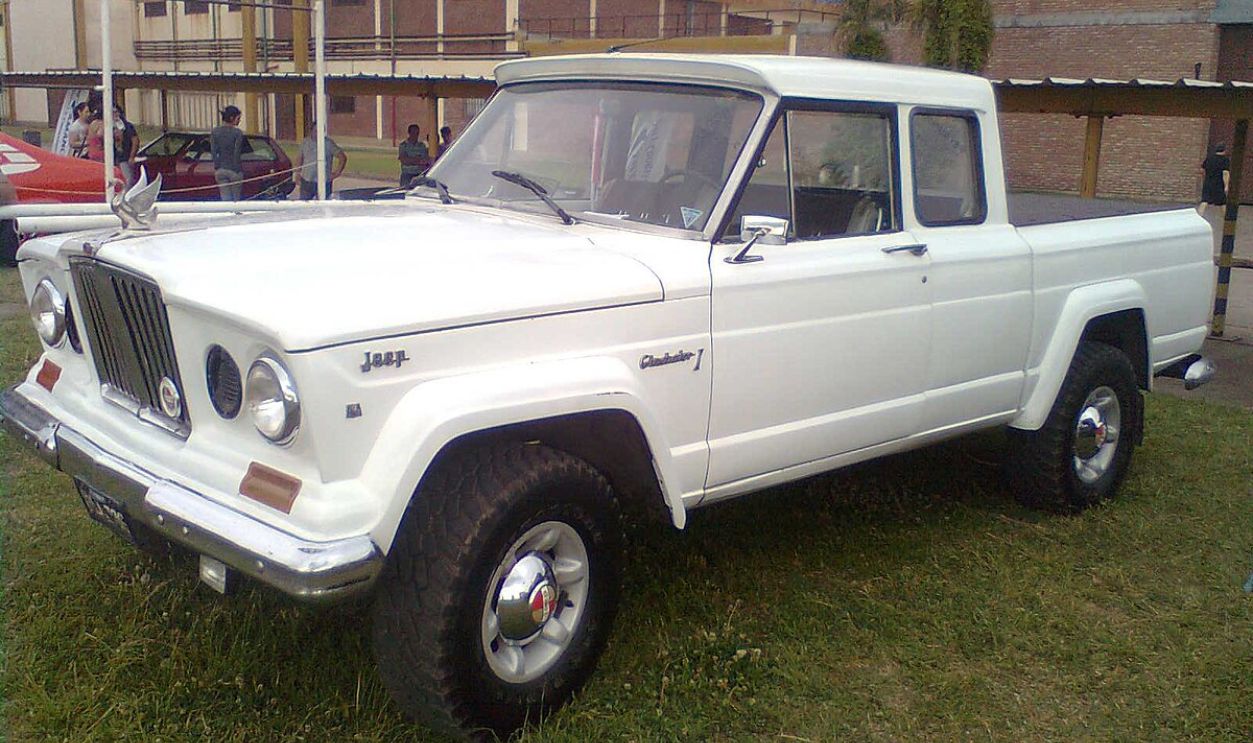 PesadosArgentinos, CC BY-SA 3.0, Wikimedia Commons
PesadosArgentinos, CC BY-SA 3.0, Wikimedia Commons
Jeep Gladiator Thriftside (1962–1965)
Gladiator Thriftside was one of the vehicles that solidified Jeep's adventure into the pickup truck market. This compact, rugged vehicle had a 118-inch wheelbase and high ground clearance. However, it was abandoned for something bigger because the market shifted towards full-sized pickups with larger cargo capacity.
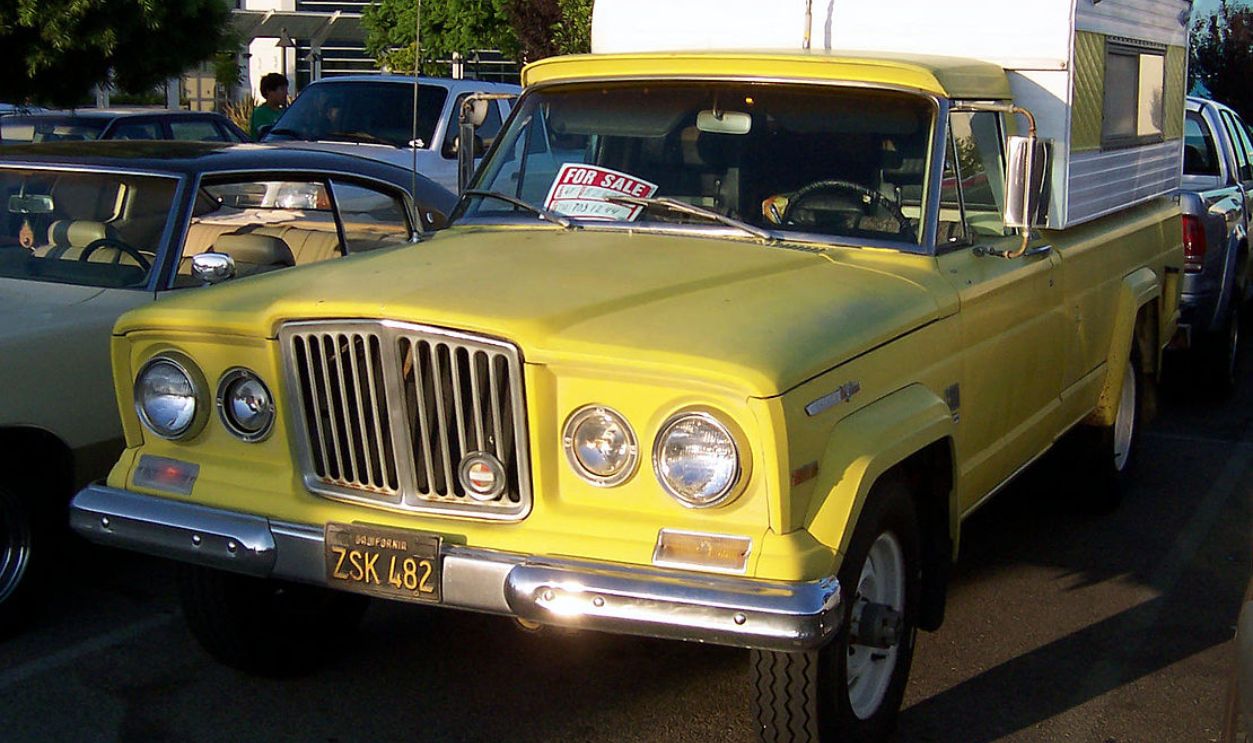 Unknown Author, Wikimedia Commons
Unknown Author, Wikimedia Commons
Jeep Gladiator Townside (1962–1988)
In came the Townside with features emphasizing its desire to dominate: powerful steel bumpers, bold chrome accents, and durable construction. As desired, the Jeep also offered ample storage space. With its inline-six engine, the Gladiator Townside was a precursor of modern Jeep models.
 Greg Gjerdingen, CC BY 2.0, Wikimedia Commons
Greg Gjerdingen, CC BY 2.0, Wikimedia Commons
Jeep Gladiator J3000 (1965–1987)
The success of Townside must have informed the release of yet another imposing Gladiator: the J3000. It had a separate cab and cargo bed and high ground clearance. This menacing automobile was celebrated for its durability and was among the first to combine heavy-duty and off-road capabilities.
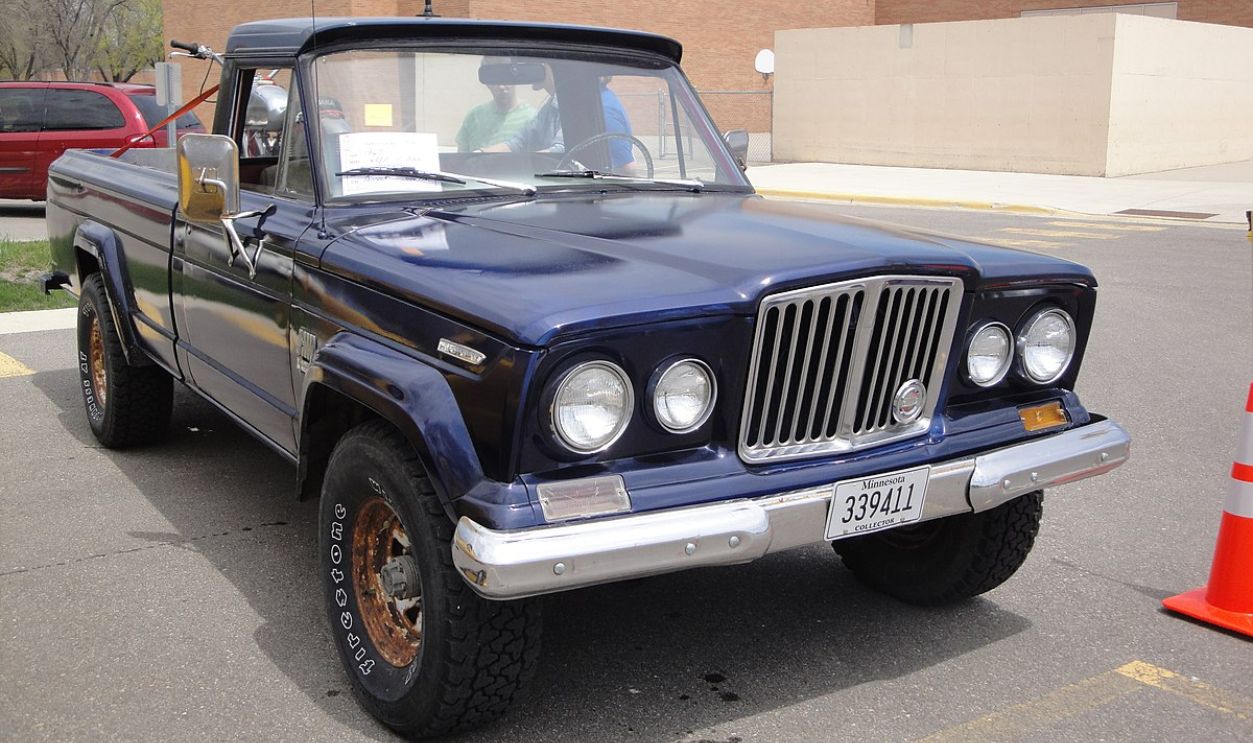 Greg Gjerdingen, CC BY 2.0, Wikimedia Commons
Greg Gjerdingen, CC BY 2.0, Wikimedia Commons
Jeep M715 (1967–1969)
To further expand their reach, Jeep began producing the M715 in 1967 as a military truck version of the Gladiator series. The vehicle had a 230 cubic-inch Tornado engine and reinforced parts to suit it for rigorous combat operations. Despite its military origins, the M715 influenced several civilian Jeep models.
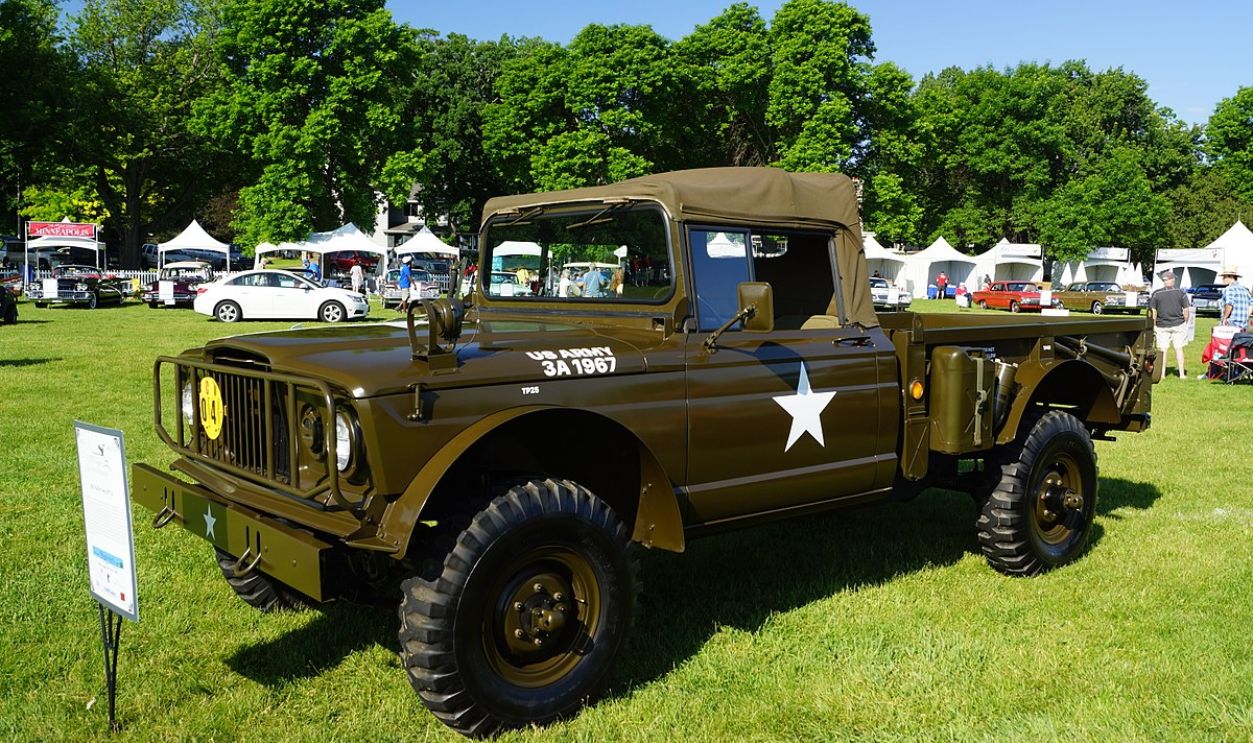 Greg Gjerdingen, CC BY 2.0, Wikimedia Commons
Greg Gjerdingen, CC BY 2.0, Wikimedia Commons
Jeep Gladiator J4000 (1970–1972)
Several distinctive specifications, like the 5.9-liter V8 engine, set the J4000 apart from its competitors. A sturdy 4x4 drivetrain and a 6.5-foot cargo bed made the truck ideal for hauling. Sadly, the J4000 looked so much like past vehicles that it lost its future relevance.
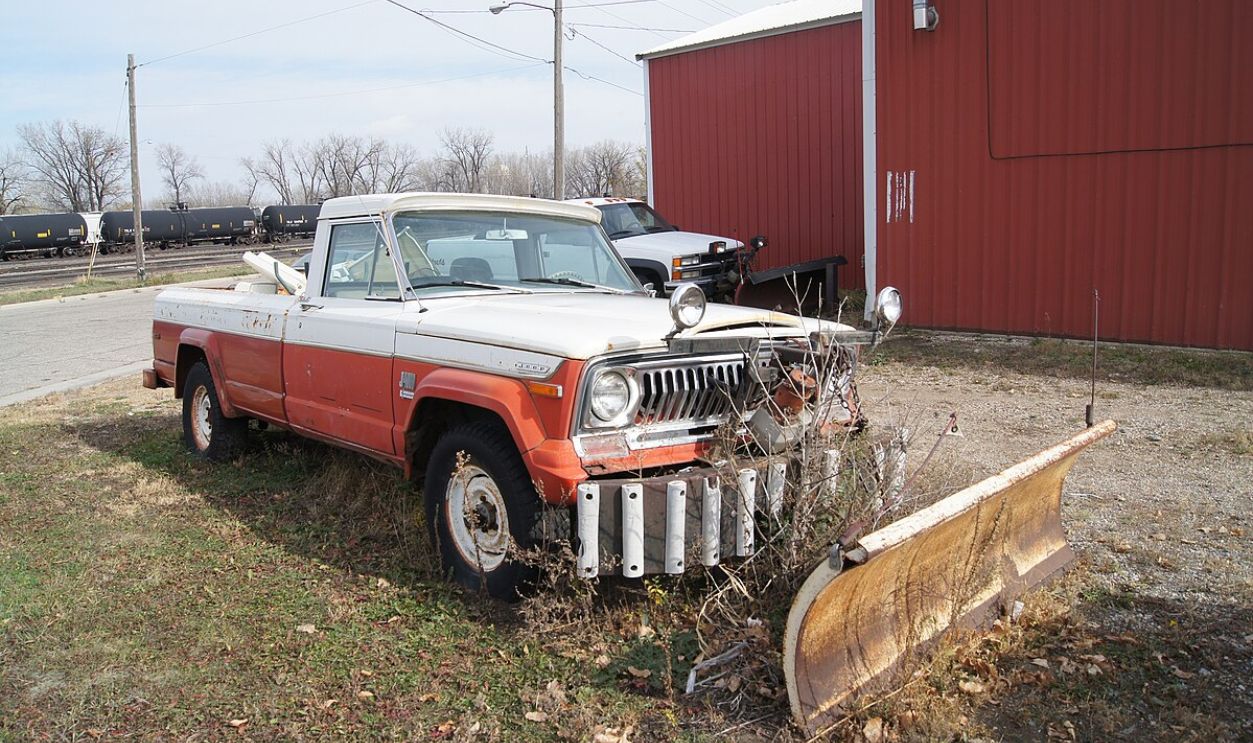 Greg Gjerdingen, CC BY 2.0, Wikimedia Commons
Greg Gjerdingen, CC BY 2.0, Wikimedia Commons
The AMC Era (1970–1988)
In 1970, American Motors Corporation (AMC) acquired Jeep, incorporating new design elements and technological features into the brand. The acquisition also introduced new Jeep models and significantly changed older ones. Furthermore, the new design philosophies influenced the development of models like the J10 and J20.
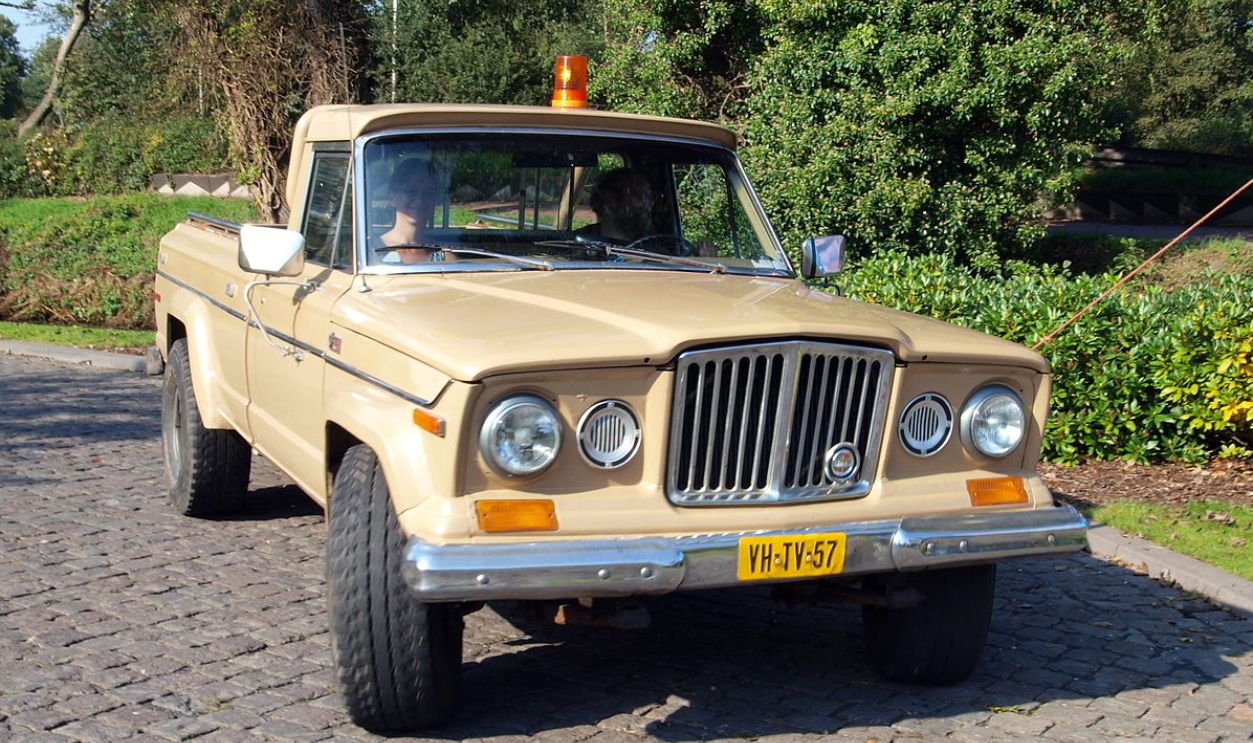 AlfvanBeem, CC0, Wikimedia Commons
AlfvanBeem, CC0, Wikimedia Commons
Jeep J10 (1971–1988)
After taking over operations, AMC introduced the Jeep J10, a short-wheelbase truck that became part of the Jeep Truck lineup. Like other Jeeps, the J10 featured a hardy design and a number of engine options to choose from, like the 258 cubic-inch AMC I6 and 360 cubic-inch AMC V8.
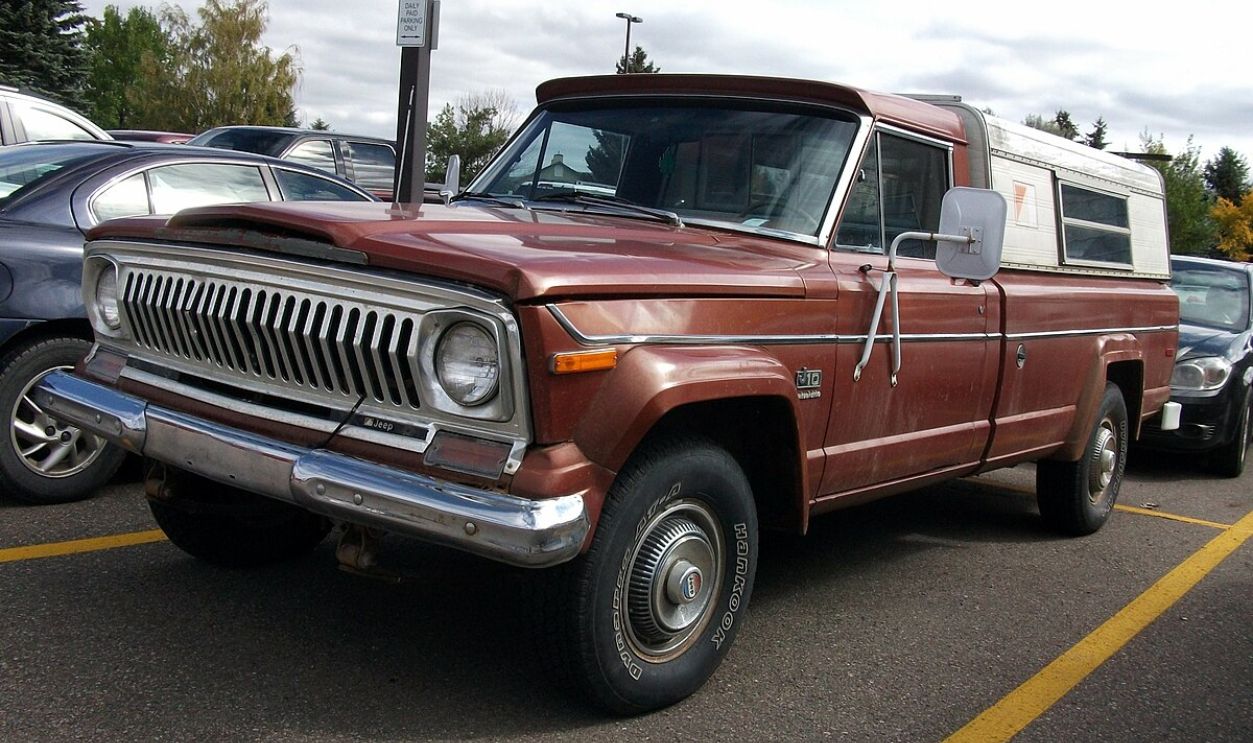 dave_7, CC BY 2.0, Wikimedia Commons
dave_7, CC BY 2.0, Wikimedia Commons
Jeep J20 (1971–1988)
In addition to the J10, Jeep also released the J20, which, in contrast, was a long-wheelbase truck. It offered more cargo space and a 3.8-liter inline-six or a 5.9-liter V8 engine. Distinctive features included a quadra-trac four-wheel-drive system, a heavy-duty suspension, and an optional high-clearance.
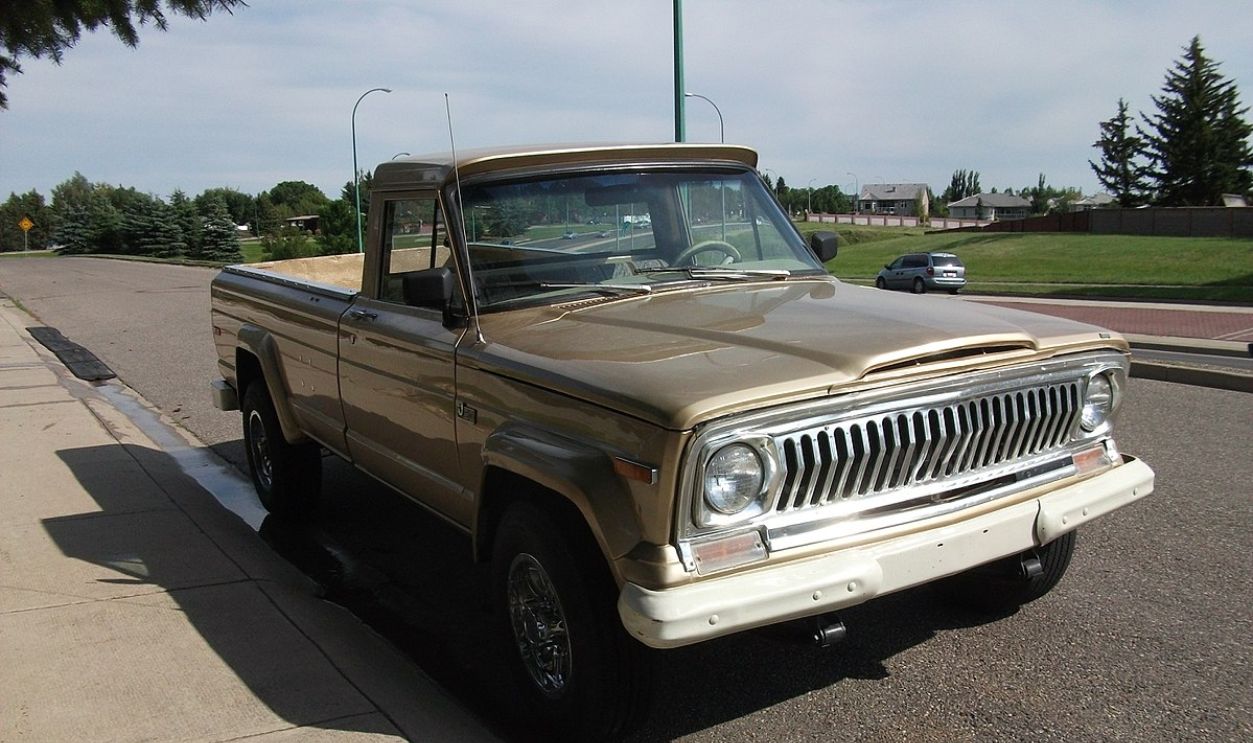 dave_7, CC BY 2.0, Wikimedia Commons
dave_7, CC BY 2.0, Wikimedia Commons
Jeep Honcho Edition (1976–1983)
By 1976, most Jeep products began looking more stunning. Perhaps the end of the Gladiator shows marked the beginning of beauty pageants. The Honcho Edition, a specially designed J10 trim, featured two-tone paint schemes, including black and gold and white and blue. This model was developed for aesthetics.
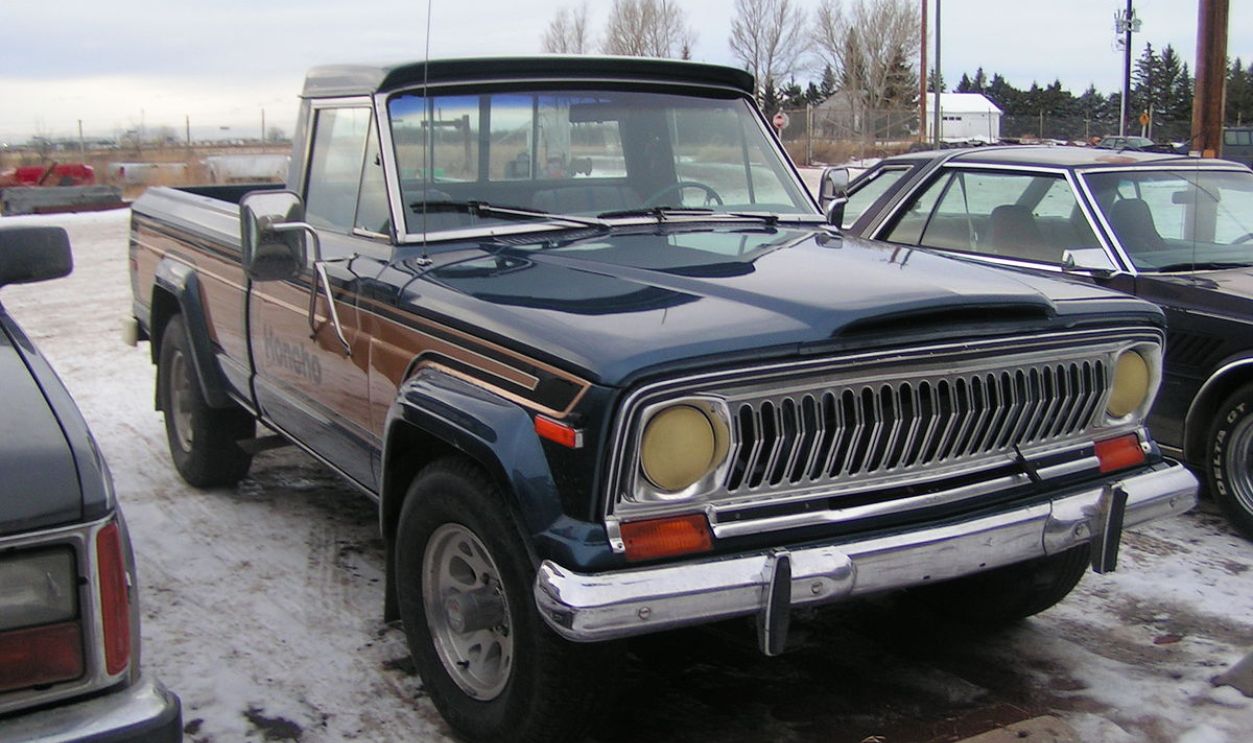 dave_7, CC BY-SA 2.0, Wikimedia Commons
dave_7, CC BY-SA 2.0, Wikimedia Commons
Jeep CJ-7 (1976–1986)
Honcho's beauty needed a beast, so Jeep introduced the Jeep CJ-7. At its debut, it had a 4.2-liter inline-six and a 5.0-liter V8 in later trims. Available in hard-top and soft-top configurations, the CJ-7 was one of the first Jeeps with a full-width, factory-installed roll bar.
Jeep Golden Eagle Edition (1977–1983)
While the Huncho Edition focused on aesthetics, the Golden Eagle Edition, a CJ-7 trim, was luxury-focused. It featured special gold exterior accents, a gold-trimmed grille, and sport-style wheels. However, this version was only a limited-run model created to celebrate Jeep's 35th anniversary.
Jeep CJ-8 Scrambler (1981–1985)
From 1981 to 1985, Jeep continued releasing the Civilian Jeep series with the CJ-8 Scrambler. Powered by a 4.2-liter inline-six engine or an optional 2.5-liter four-cylinder engine, the Scrambler was distinct for its extended wheelbase, which guaranteed stability and extra cargo space than the CJ-7.
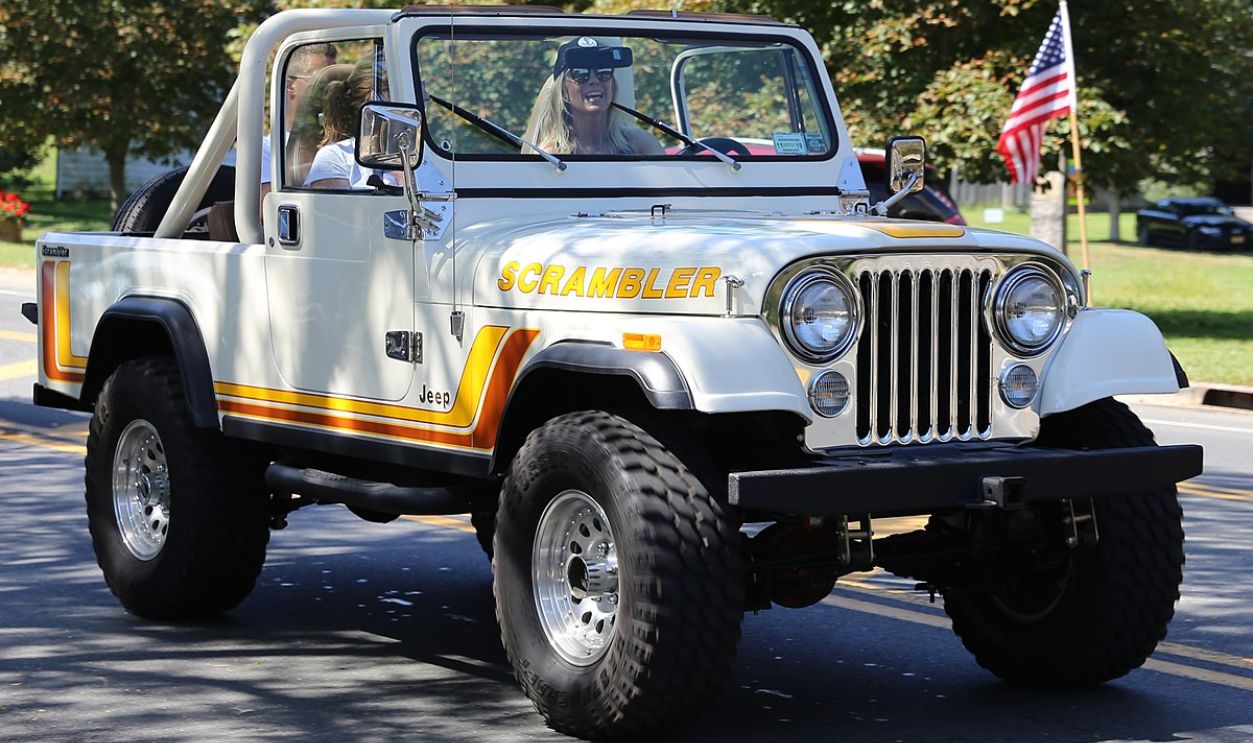 Mr.choppers, CC BY-SA 3.0, Wikimedia Commons
Mr.choppers, CC BY-SA 3.0, Wikimedia Commons
Jeep CJ-10 (1981-1985)
Together with the Scrambler was the Jeep CJ-10, designed primarily for commercial and off-road use. Its 4.2-liter inline-six engine was combined with a four-speed manual transmission and a part-time four-wheel-drive system. The CJ-10 also had a longer wheelbase than previous CJ models, offering increased cargo room.
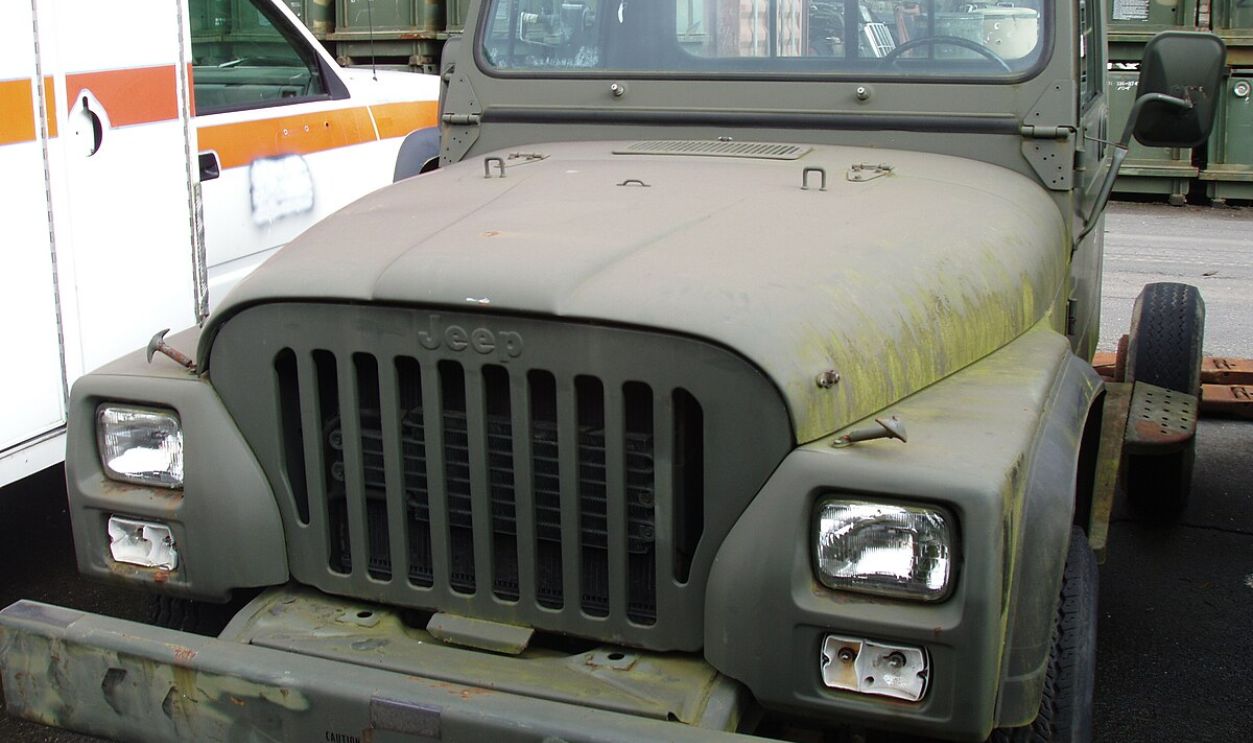 Matthias Becker, CC BY-SA 3.0, Wikimedia Commons
Matthias Becker, CC BY-SA 3.0, Wikimedia Commons
Jeep Comanche Chief (1985–1992)
Historically, the Jeep Comanche Chief was one of the last models to use the legendary AMC platform. This compact pickup truck features a unique two-tone paint scheme, heavy-duty suspension, and distinctive decals, emphasizing its off-road capabilities. Today, the Chief is a sought-after classic for collectors.
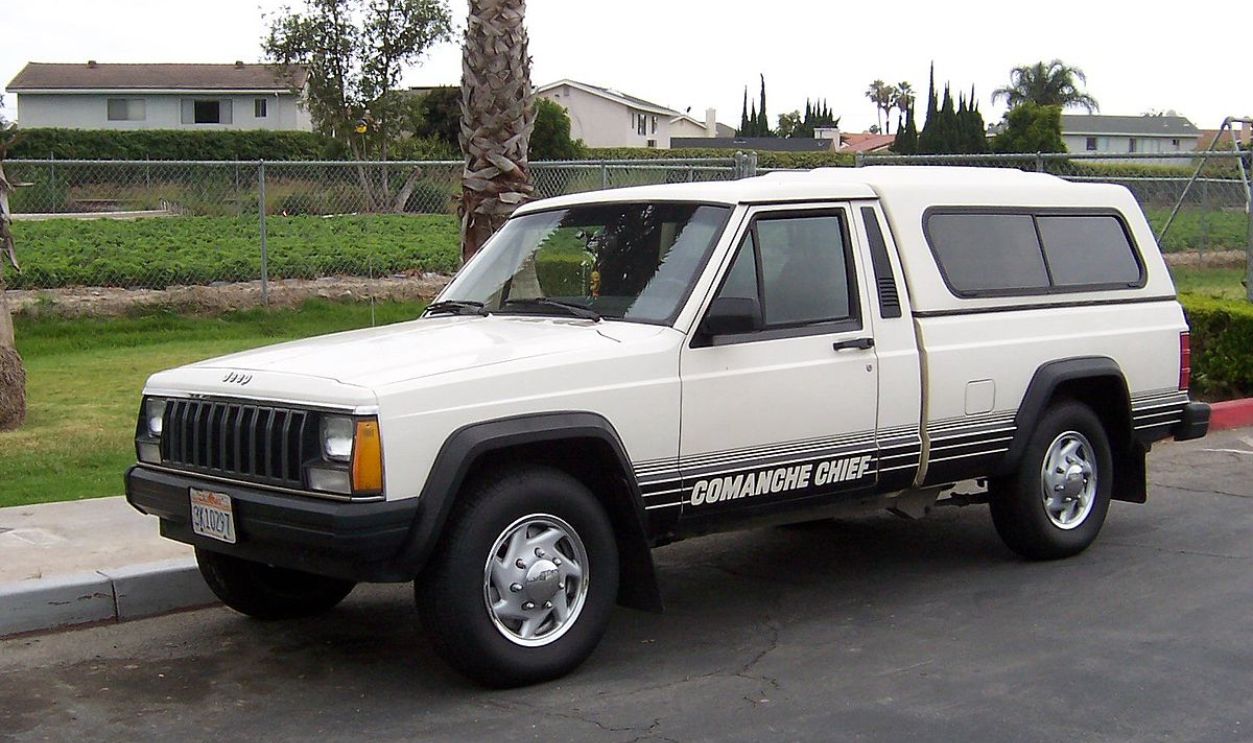 Unknown Author, Wikimedia Commons
Unknown Author, Wikimedia Commons
Jeep Comanche Base Model (1985–1992)
Though this Comanche had the exact fundamental specifications as other Comanche trims, it featured fewer luxury features and was affordable. It shared the same engine choices, like the 2.5-liter inline-four and 4.0-liter inline-six, but had fewer interior amenities.
Jeep Comanche (MJ) (1985-1992)
The name "Comanche" was chosen because Jeep wanted to celebrate Native American history and prowess. This series included compact and rugged pickup trucks. With an innovative unibody construction, the MJ offered solid axles and high-ground clearance, making it a favorite among farmers and adventurers.
Jeep Comanche Eliminator (1986–1992)
Another notable variant of the Jeep Comanche was the Eliminator, produced from 1986 to 1992. This trim looks sportier with its unique graphics, lowered suspension, and attractive alloy wheels. Other features that earned it praise were the sports seats and a leather-wrapped steering wheel.
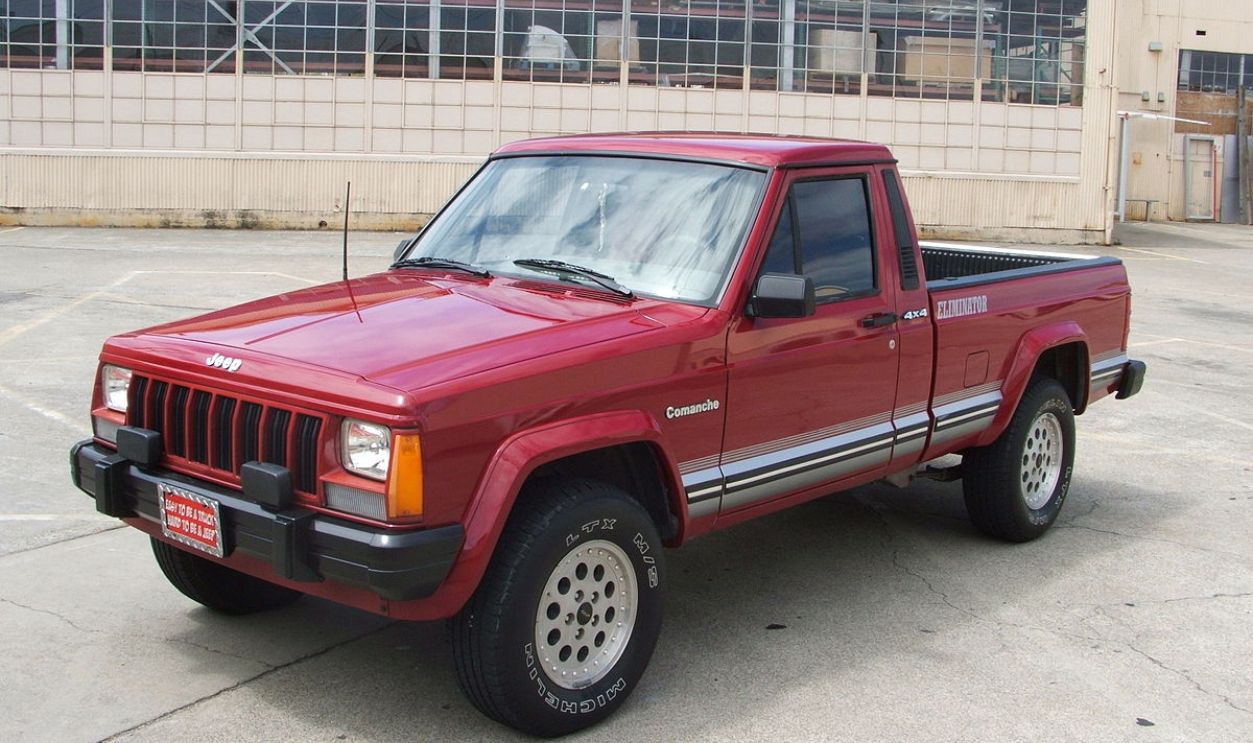 Shharks, CC BY-SA 3.0, Wikimedia Commons
Shharks, CC BY-SA 3.0, Wikimedia Commons
Jeep Comanche Pioneer (1986–1992)
In 1986, Jeep introduced the Comanche Pioneer, featuring a rugged design and distinctive square-edged body. As one of the higher Comanche trims, the Pioneer included upgrades like alloy wheels, power steering, and air conditioning. An available 4WD system enabled it to drive on rough surfaces.
Chrysler's Acquisition of AMC and Jeep (1987)
The Chrysler Era began with the company's 1987 purchase of AMC. This transaction introduced newer designs and gave Jeep Trucks new directions. Chrysler also used the opportunity to integrate its engineering innovations with Jeep's rugged design.
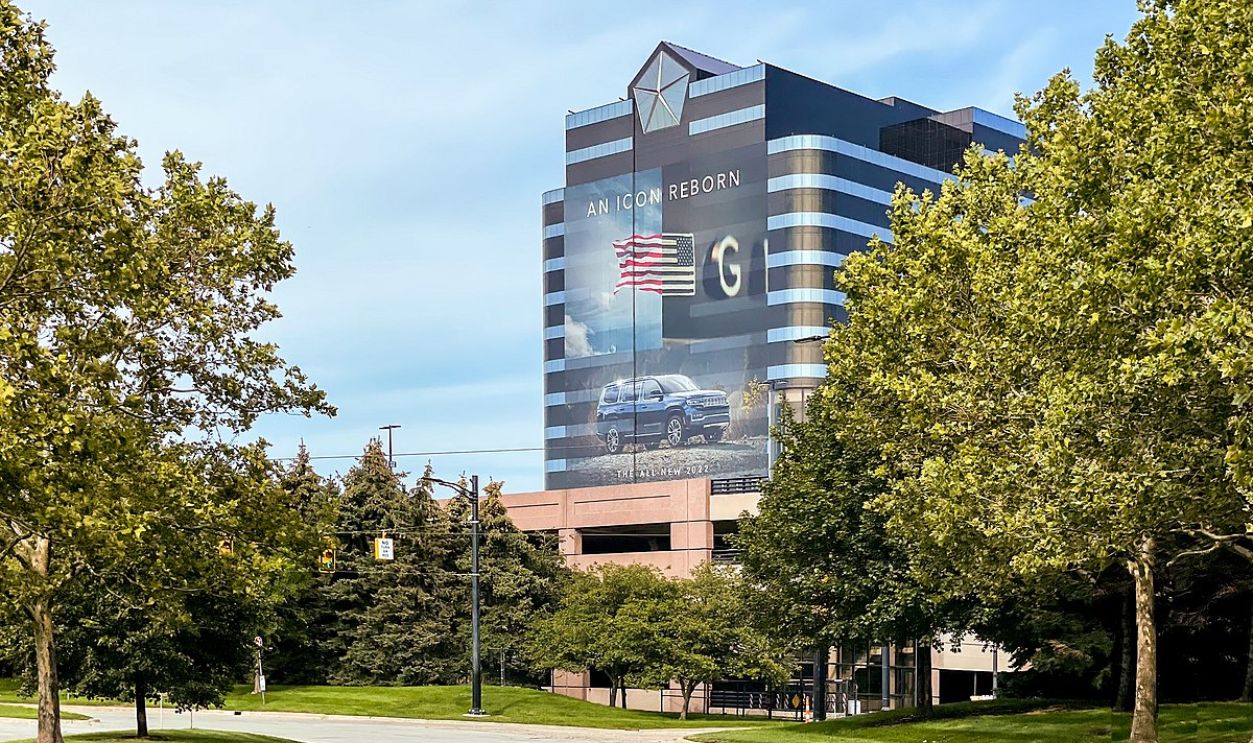 ajay_suresh, CC BY 2.0, Wikimedia Commons
ajay_suresh, CC BY 2.0, Wikimedia Commons
DaimlerChrysler Era (1998–2007)
Later, in 1998, Chrysler partnered with Daimler-Benz to form the DaimlerChrysler. This alliance improved Jeep's design and technological features as DaimlerChrysler introduced new models and updates. Additionally, the era concentrated on modernizing Jeep Trucks while maintaining core qualities like durability and performance.
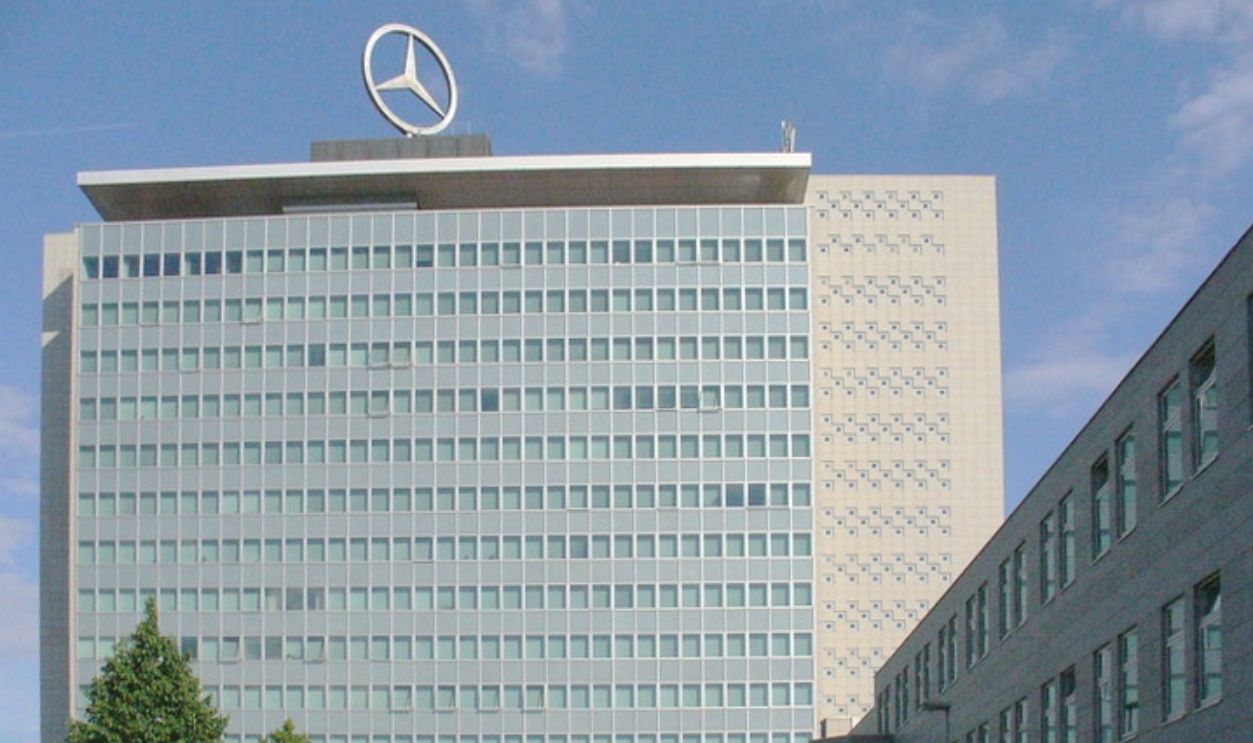 Enslin, CC BY-SA 3.0, Wikimedia Commons
Enslin, CC BY-SA 3.0, Wikimedia Commons
Jeep Liberty (2002–2012)
The Jeep Liberty, launched in 2002, was the first Jeep to use rack-and-pinion steering and shared the same platform with the Dodge Nitro. It offered unibody construction, independent front suspension, and the choice between the more rugged Command-Trac or the all-wheel-drive Selec-Trac.
Jeep Nukizer 715 (2009)
Jeep showcased the Nukizer 715 in 2009 at the Moab Easter Jeep Safari. Built on a Jeep J8 four-door military platform, the Nukizer maintained the 2.8-liter four-cylinder VM Motori turbo-diesel engine used in the J8. This was later upgraded to generate more power and torque.
 A1AA1A, CC BY-SA 4.0, Wikimedia Commons
A1AA1A, CC BY-SA 4.0, Wikimedia Commons
Jeep Concept J-12 (2009)
Visitors at the 2009 Easter Jeep Safari also witnessed firsthand the introduction of the J-12. This Jeep, built on the Jeep Wrangler Unlimited platform, features a 5-foot cargo bed. Other offers include a 3.8-liter V6 engine, a 6-speed manual transmission, and Jeep's Command-Trac 4WD system.
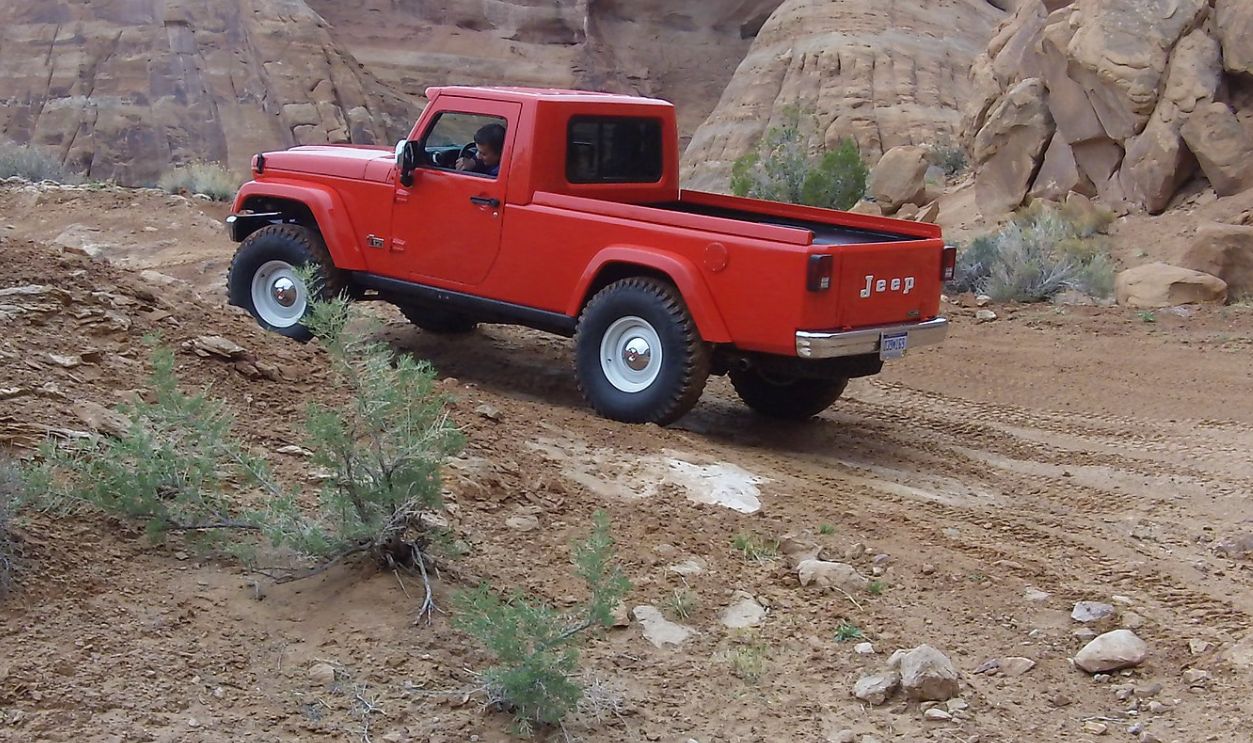 Fiat Chrysler Automobiles: Corporate, Flickr
Fiat Chrysler Automobiles: Corporate, Flickr
Fiat Chrysler Automobiles (2014)
The Jeep model lasted this long because it always found itself in good hands. In 2014, Fiat Chrysler Automobiles (FCA) was formed, bringing Jeep's ownership under the new conglomerate. It helped Fiat return to the North American market and granted Chrysler access to Fiat's technology and platforms.
 qwesy qwesy, CC BY 3.0, Wikimedia Commons
qwesy qwesy, CC BY 3.0, Wikimedia Commons
Jeep Gladiator Reintroduction (2019)
In 2019, Jeep, feeling the need for more Gladiator shows, reintroduced the model after a 33-year break. The new Gladiator had a 5-foot truck bed and a 3.6-liter V6 or a 3.0-liter turbo-diesel V6. Both engines merged with a 6-speed manual transmission or an 8-speed automatic.
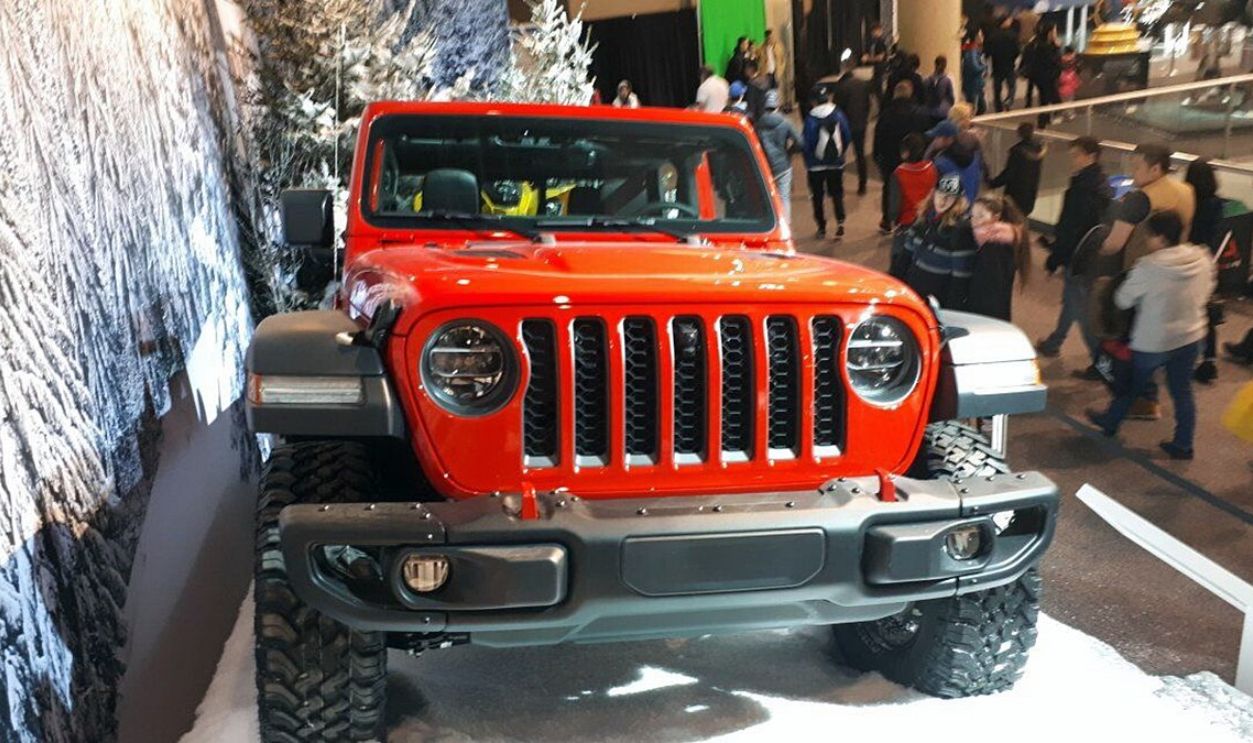 The Wikipeadian guy, CC BY-SA 4.0, Wikimedia Commons
The Wikipeadian guy, CC BY-SA 4.0, Wikimedia Commons
Jeep Gladiator Rubicon (2019)
The Jeep Gladiator Rubicon, with a 3.6-liter V6 engine, features heavy-duty Dana 44 axles, electronically locking differentials, a 4:1 low-range transfer case, rock rails, and skid plates. It honors Jeep's 1960s Gladiator legacy, combining advanced off-road capabilities with modern utility.
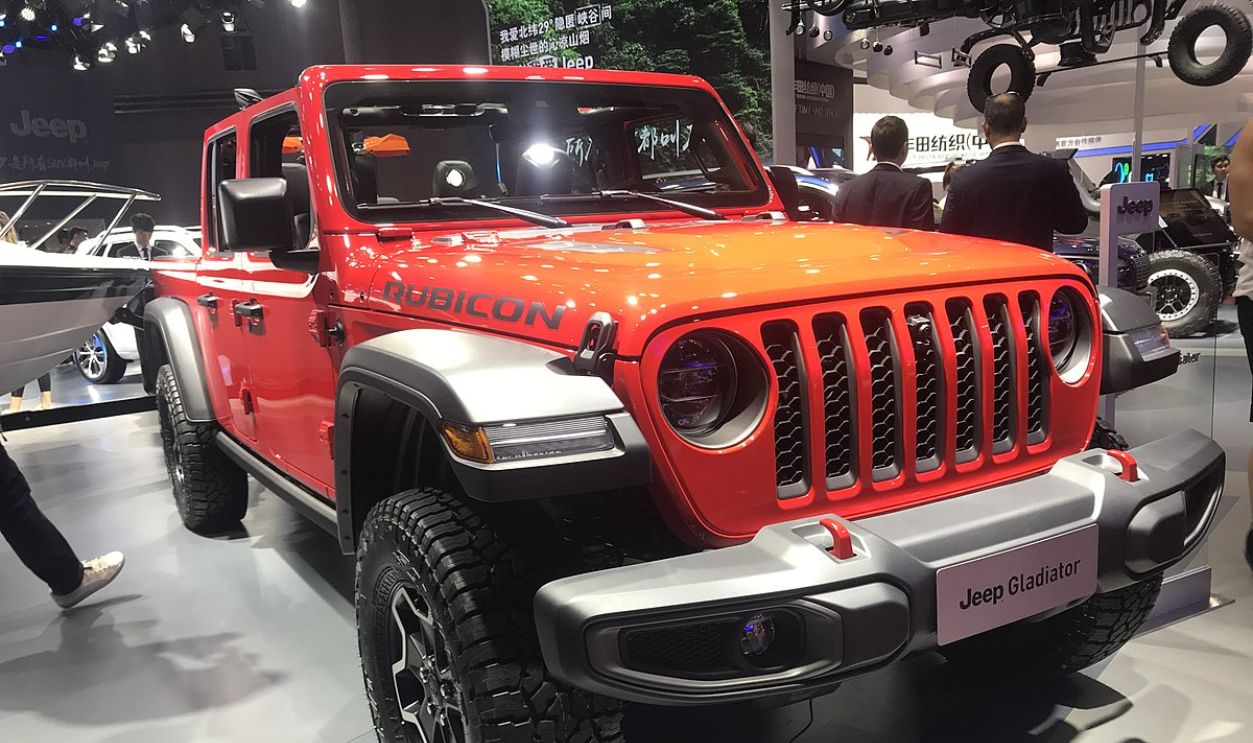 Jengtingchen, CC BY-SA 4.0, Wikimedia Commons
Jengtingchen, CC BY-SA 4.0, Wikimedia Commons
Jeep Gladiator JL (2019-Present)
An interesting feature of the Gladiator JL is its Command-Trac 4x4 and available Rock-Trac 4x4 systems. It can comfortably carry up to 1,600 pounds and tow up to 7,650 pounds. The Gladiator JL is the revived version of the Gladiator nameplate discontinued in the 1980s.
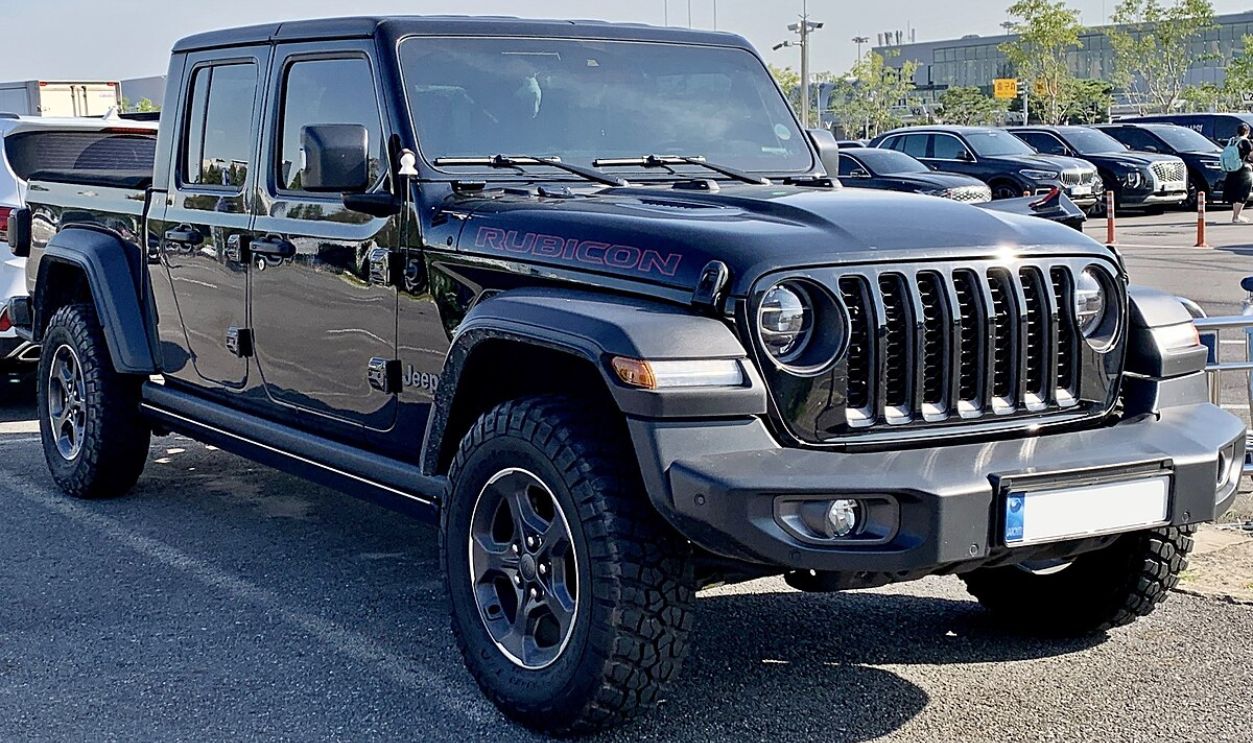 Benespit, CC BY-SA 4.0, Wikimedia Commons
Benespit, CC BY-SA 4.0, Wikimedia Commons
Jeep Gladiator High Altitude (2019)
At its launch, the High Altitude featured special styling elements such as a body-color grille, unique 20-inch wheels, and a sleek black interior with leather-trimmed seats. One of Jeep's most recent models, it features adaptive cruise control, forward collision alert, and a premium audio system.
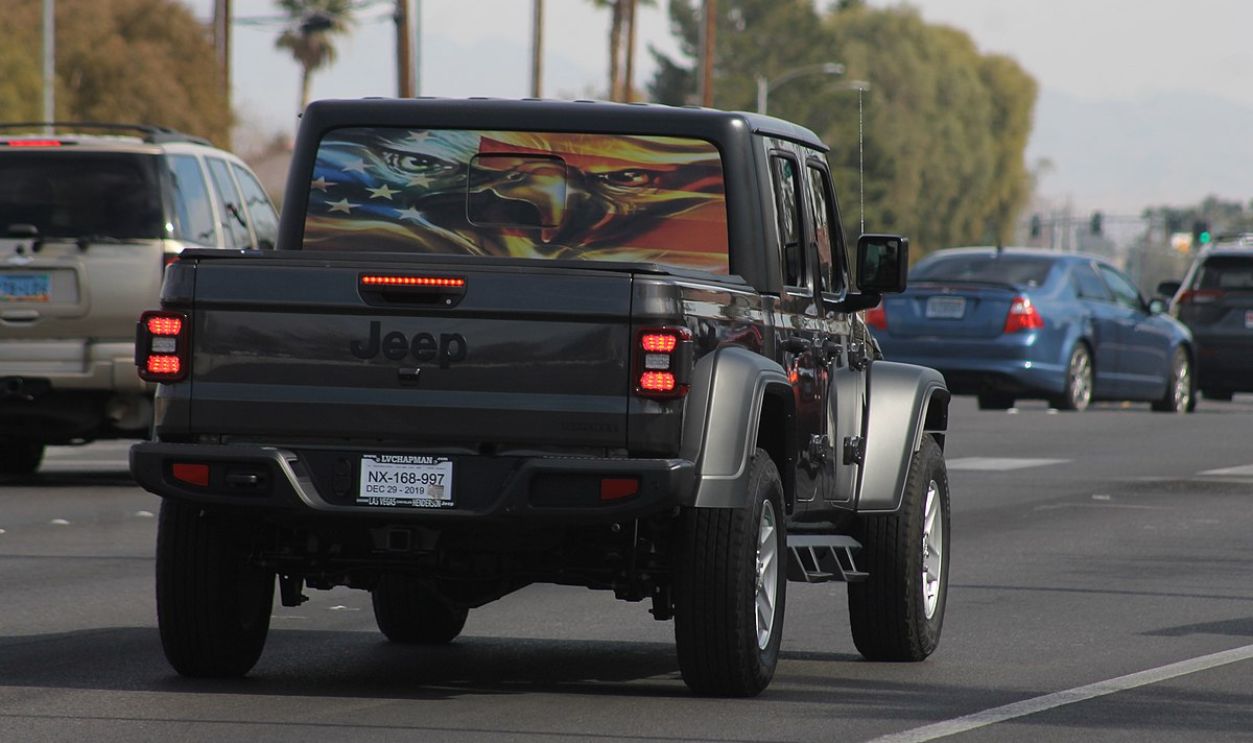 Noah Wulf, CC BY-SA 3.0, Wikimedia Commons
Noah Wulf, CC BY-SA 3.0, Wikimedia Commons
Jeep Gladiator JT (2019)
Another model of the Gladiator is this midsize pickup truck that features a 5-foot truck bed and two engine options. The 3.6-liter V6 engine produces 285 horsepower, while the 3.0-liter EcoDiesel V6 generates 260 horsepower. Both engines merge with a 6-speed manual or an 8-speed automatic transmission.
 Kevauto, CC BY-SA 4.0, Wikimedia Commons
Kevauto, CC BY-SA 4.0, Wikimedia Commons
Jeep Gladiator Mojave (2020)
The Mojave, launched in 2020, is yet another high-performance trim of the Gladiator. It stands out for its solid Fox 2.5-inch internal bypass shocks, reinforced front skid plate, and powerful suspension system. This automobile is named after the Mojave Desert, reflecting its high-speed capabilities in the desert.
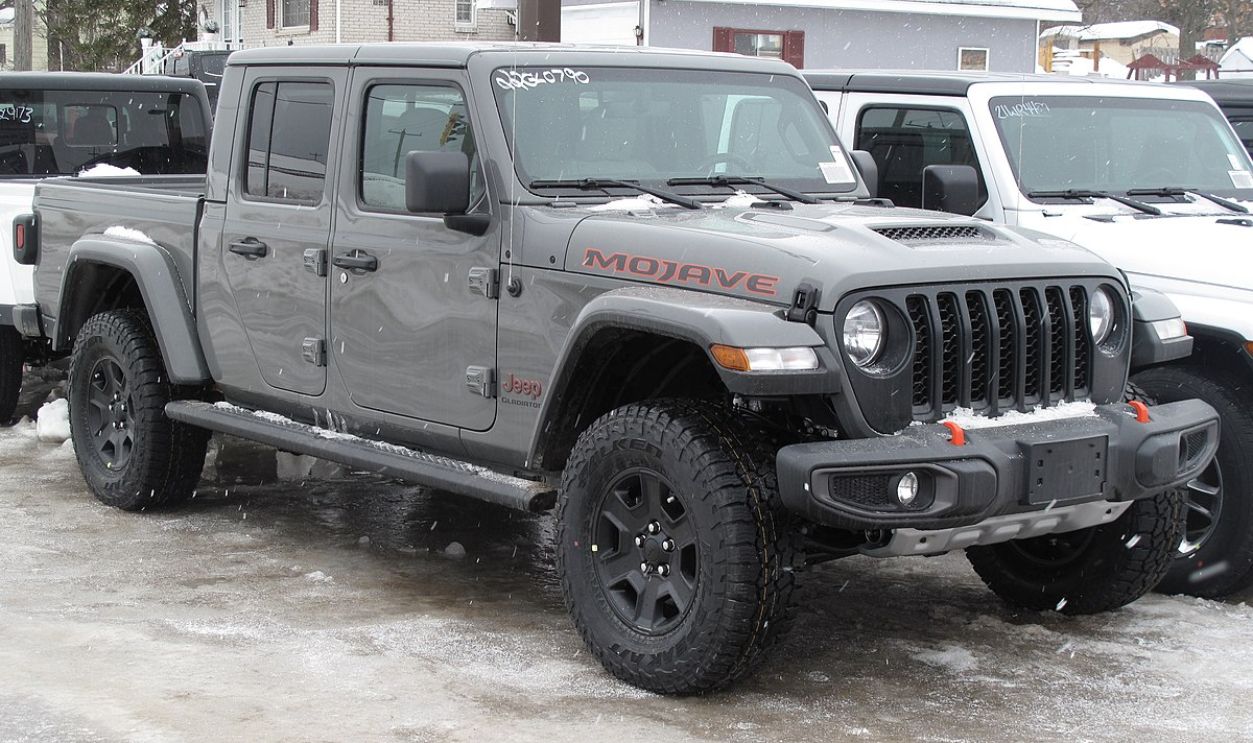 Elise240SX, CC BY-SA 4.0, Wikimedia Commons
Elise240SX, CC BY-SA 4.0, Wikimedia Commons
Jeep Gladiator J300 (2024)
The Jeep Gladiator J300 succeeded the famous Gladiator JT with a powerful 3.6-liter V6 engine that generates 285 horsepower. This engine combines with a six-speed manual or an eight-speed automatic transmission. Other features include an advanced four-wheel-drive system with high ground clearance and heavy-duty axles.
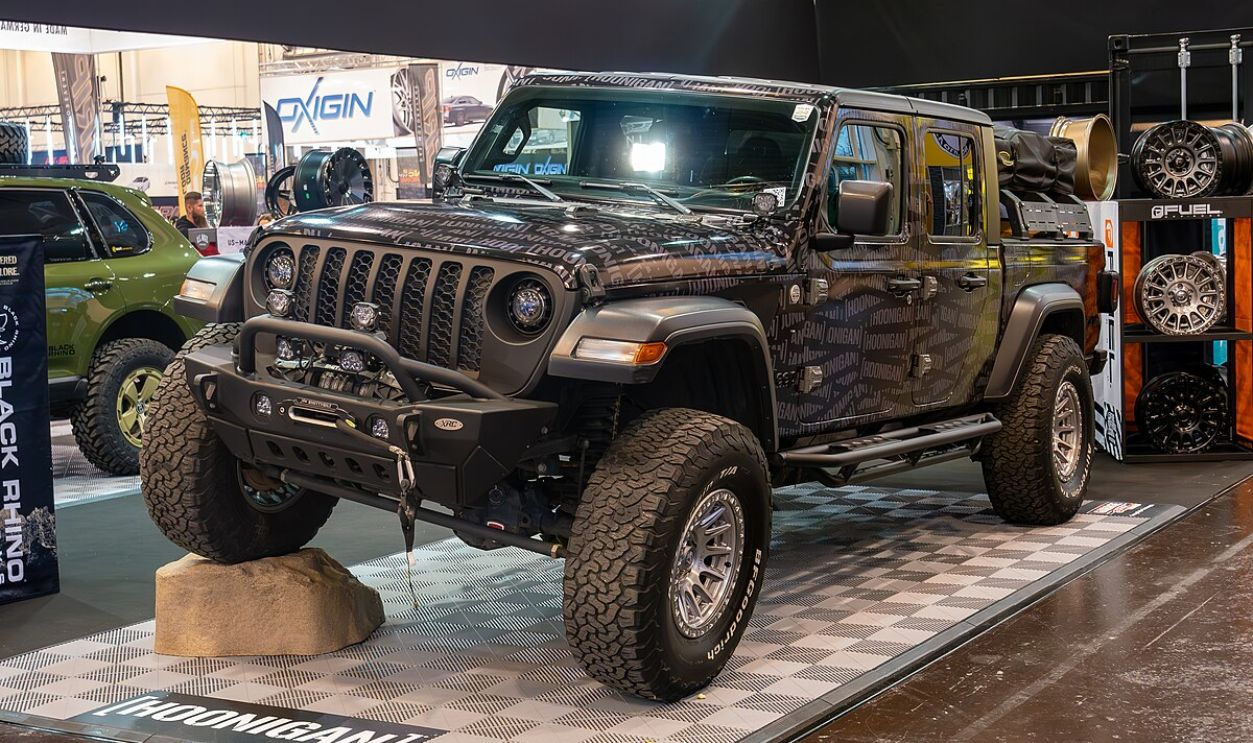 MB-one, CC BY-SA 4.0, Wikimedia Commons
MB-one, CC BY-SA 4.0, Wikimedia Commons
Then And Now
It is commendable how far Jeep has come. It has adapted and evolved from making trucks for military needs to gaining a name for itself in the commercial industry. Its reputation and capabilities as an off-road beast are unmatched and remain as iconic as ever.
![]() Damian B Oh, CC BY-SA 4.0, Wikimedia Commons
Damian B Oh, CC BY-SA 4.0, Wikimedia Commons

